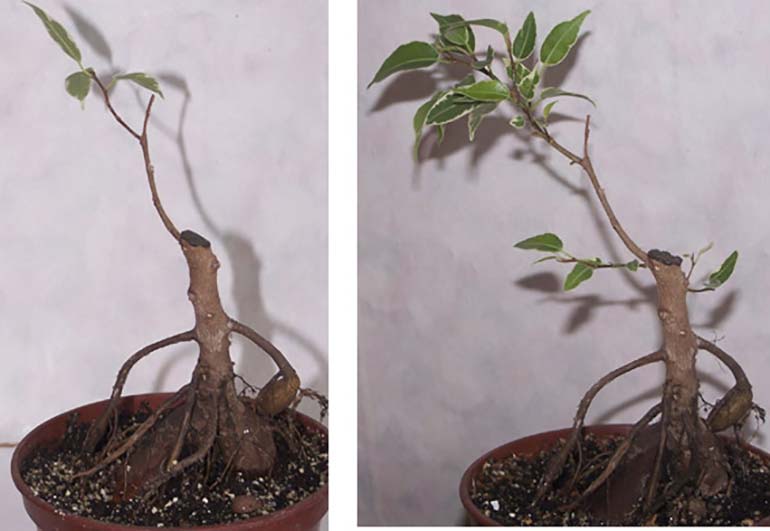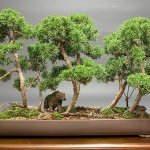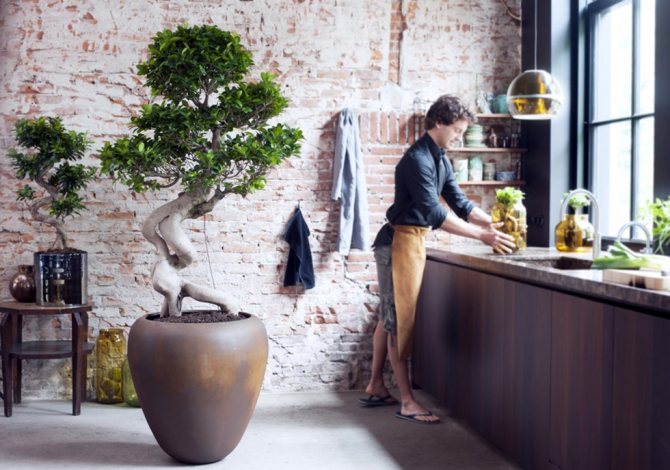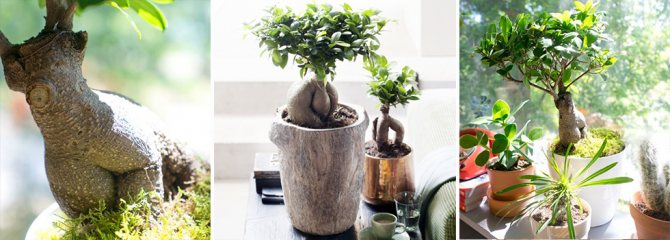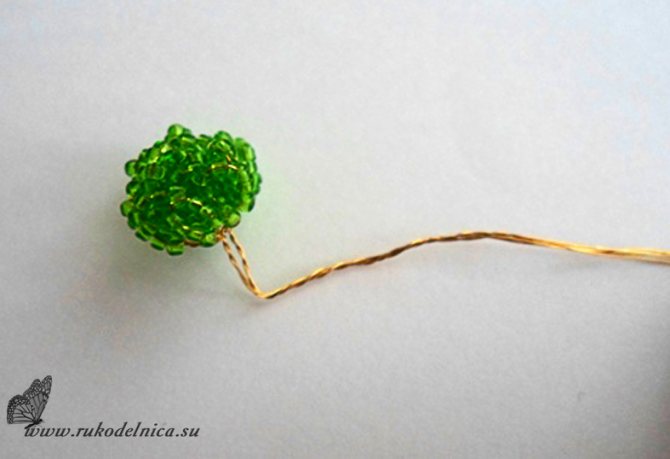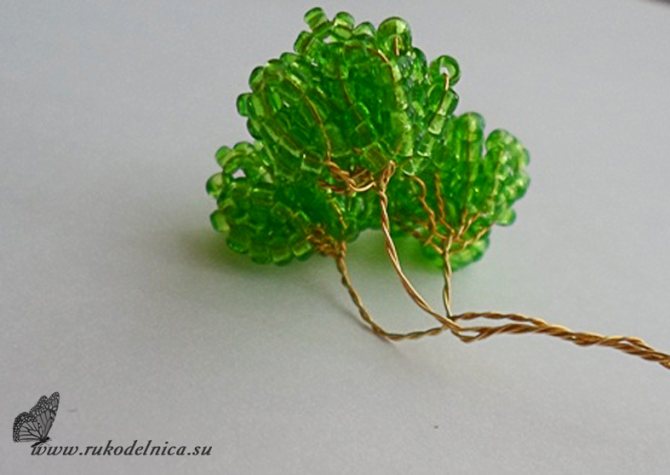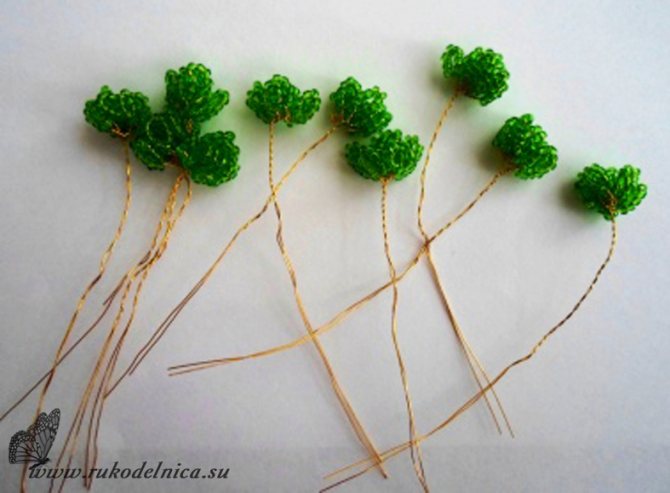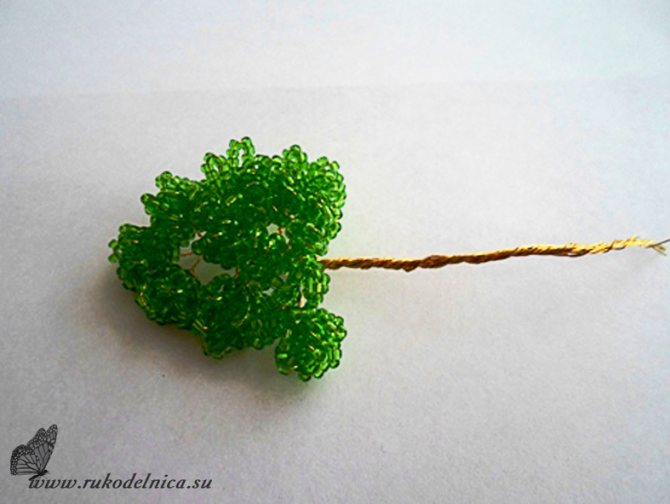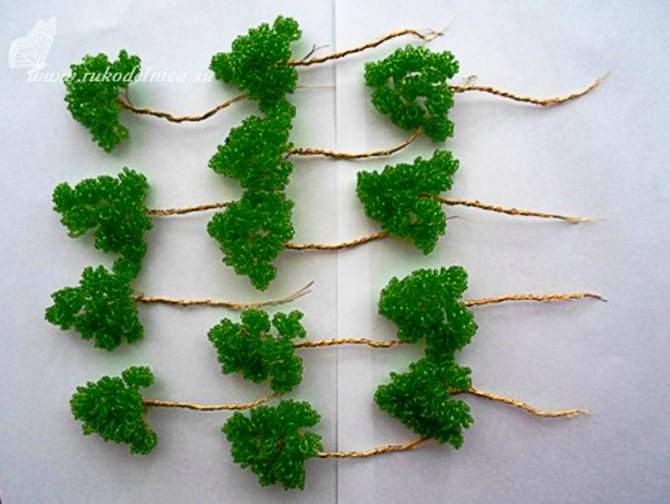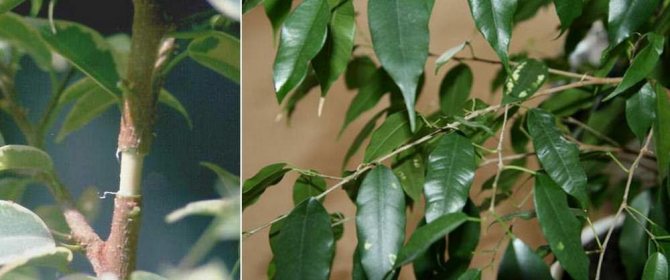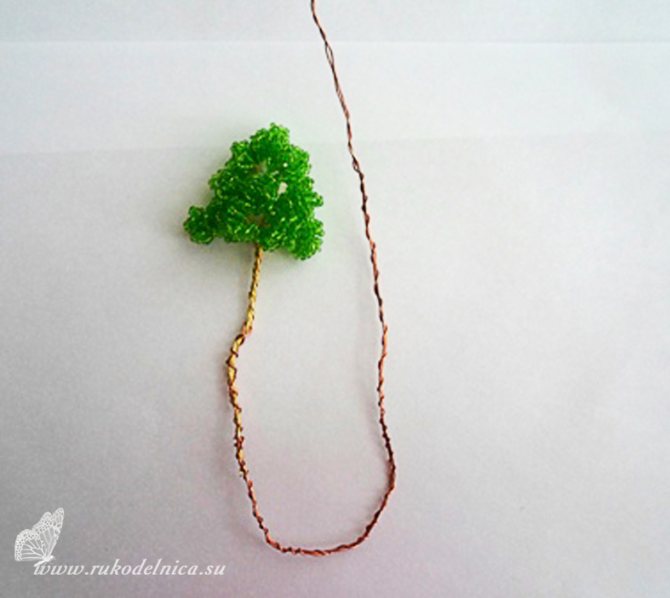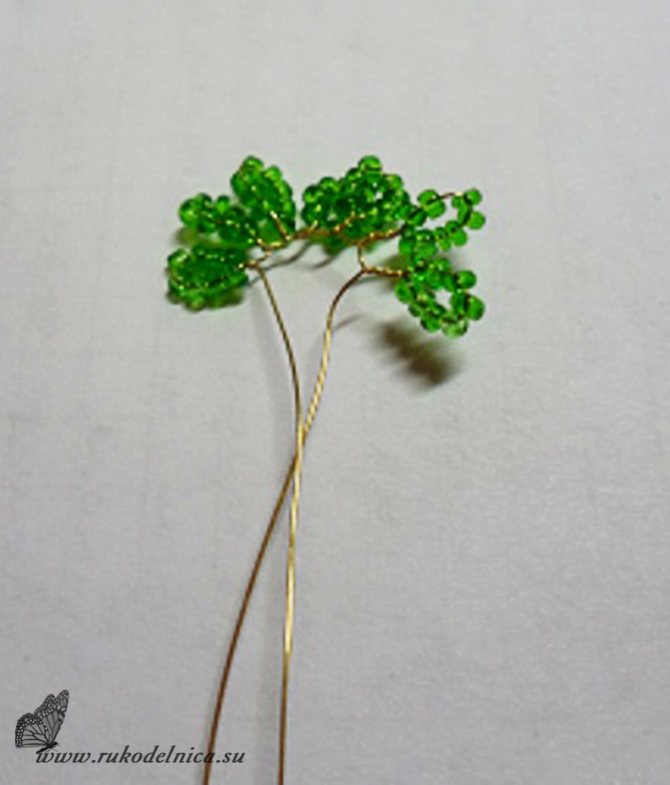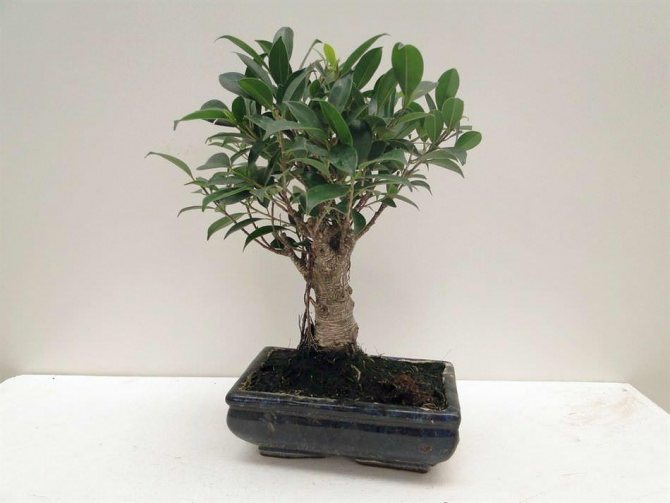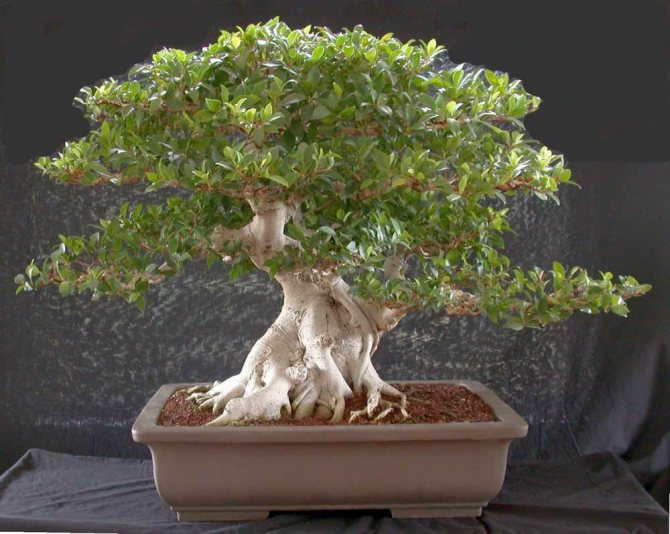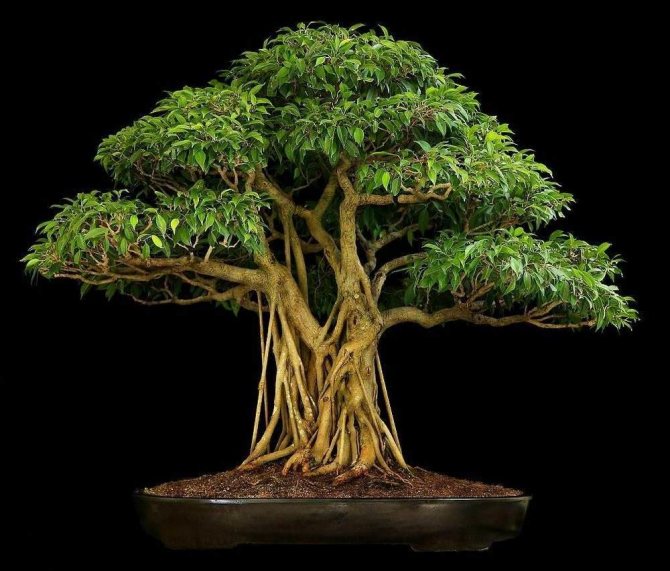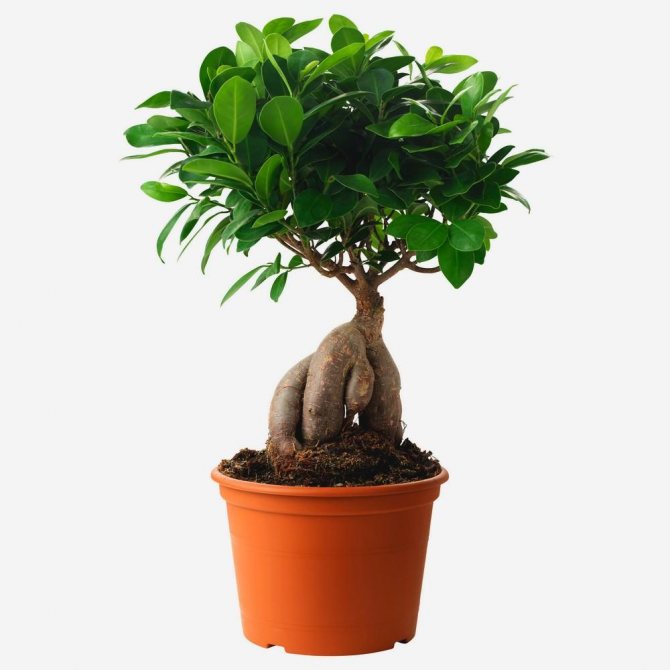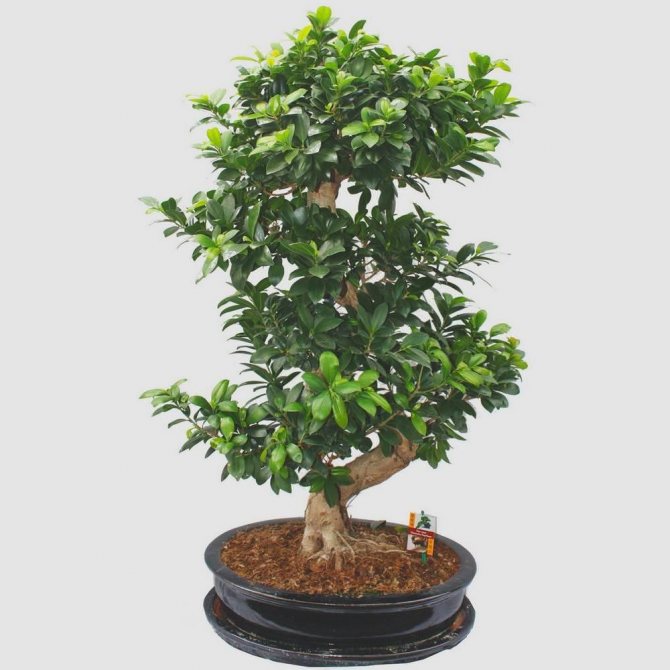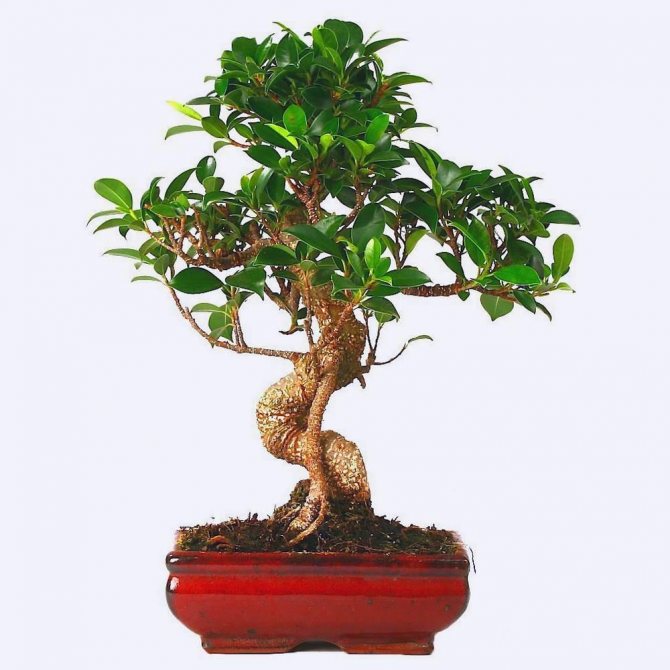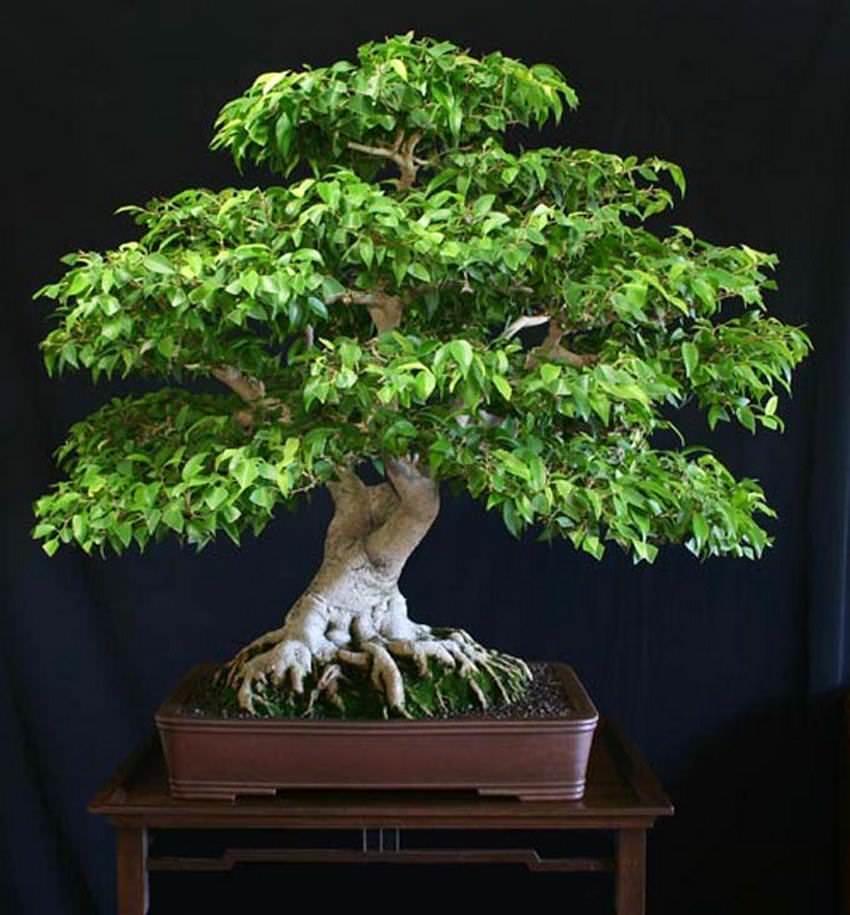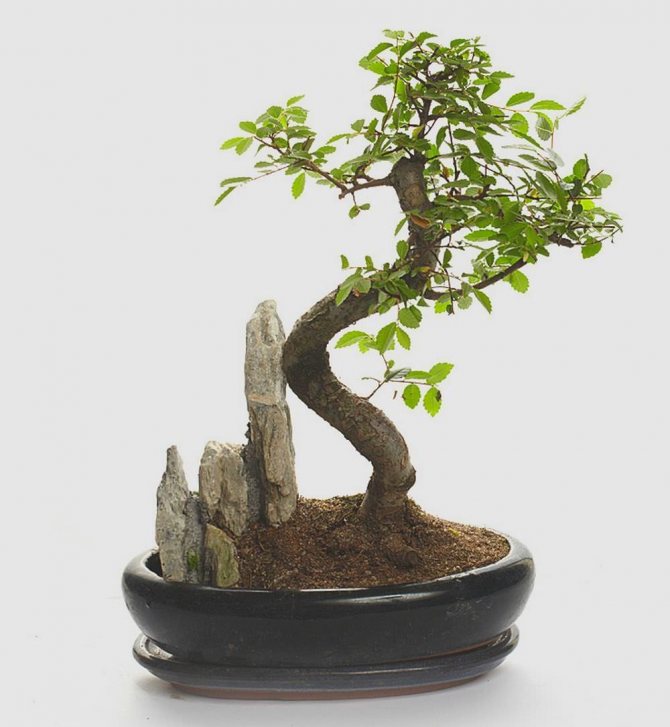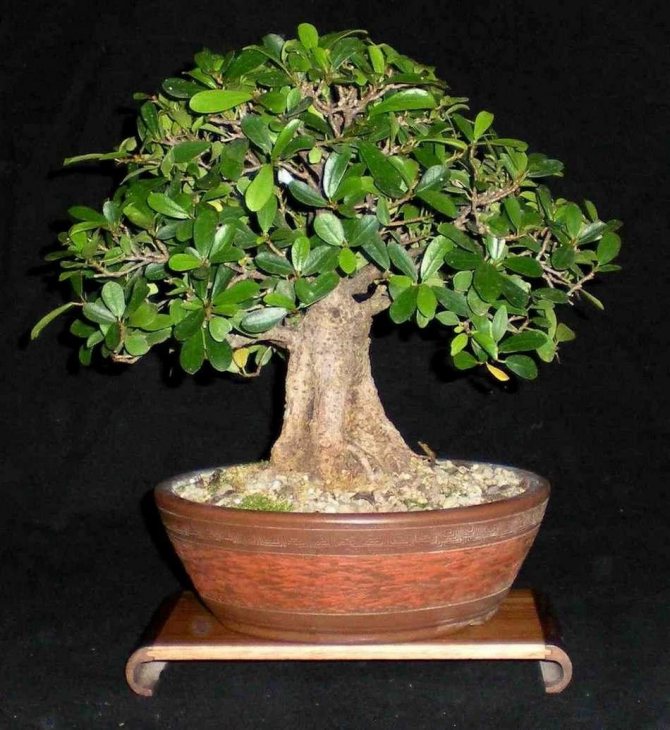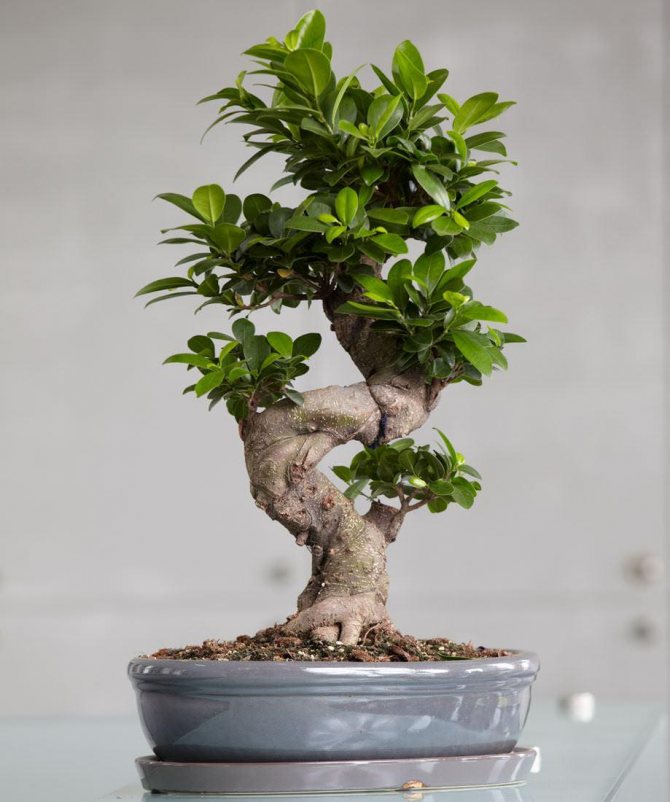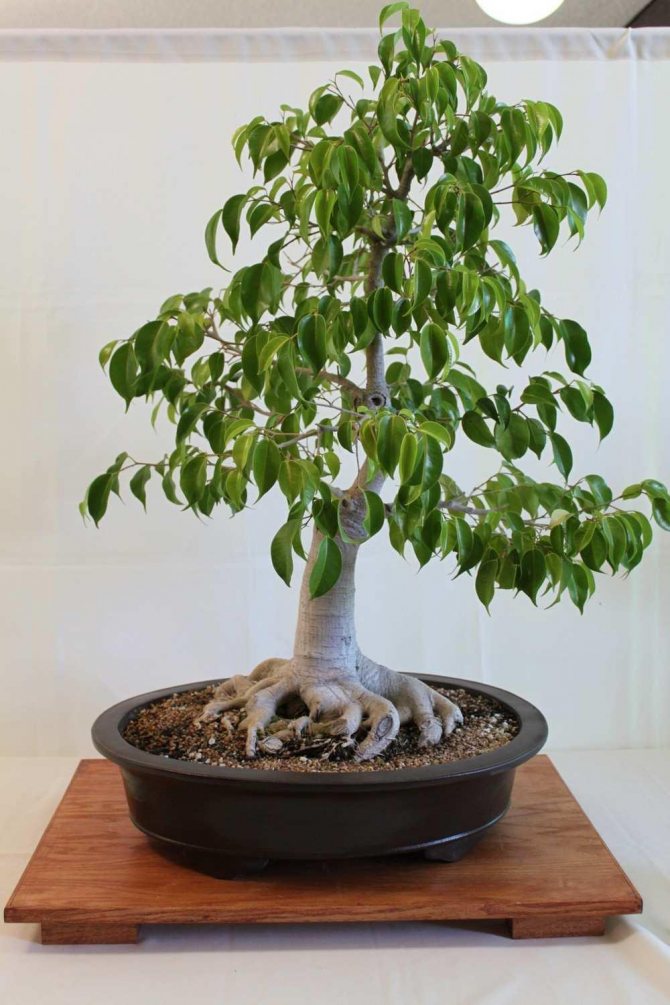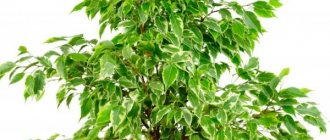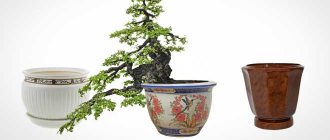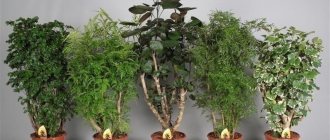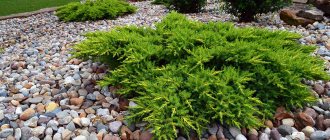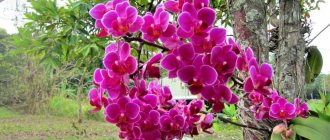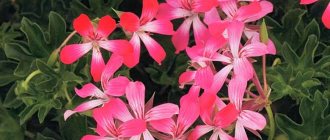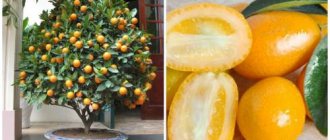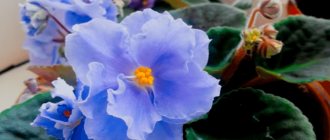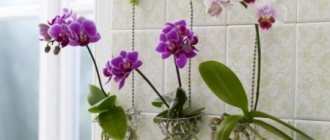The art of bonsai, which originated in China 2 thousand years ago, allows you to grow miniature copies of real trees. In modern life, it makes it possible to create beautiful landscape compositions.
Japanese art of making a small copy of natural wood
However, even in a single apartment, you can fully enjoy the ancient art. For the purpose of growing bonsai at home, Benjamin's unpretentious ficus, which takes root well in new conditions, is suitable. Its beautiful foliage and slow growth for this art is exactly what the doctor ordered.
Description
Ginseng, aka microcarpa or small-fruited ficus, belongs to the Mulberry family.
In Latin, its scientific name sounds like Ficus microcarpa ginseng.
Under natural conditions, it is an evergreen tree 15-25 meters high with a dense spreading crown, a powerful trunk and huge aerial roots hanging down.
In indoor culture, it is most often grown in the form of a bonsai with a small trunk, but a huge rhizome, shaped like a ginseng root. Not by chance "Ginseng" translates to "ginseng". The tropics and subtropics of Southeast Asia are the usual habitat of the tree.
This representative of the flora is also called "Indian laurel", "green island" and "Chinese banyan tree".
Its dark green leathery leaves are quite large - up to 15 cm in length.
They are oval in shape and differ in a glossy surface.
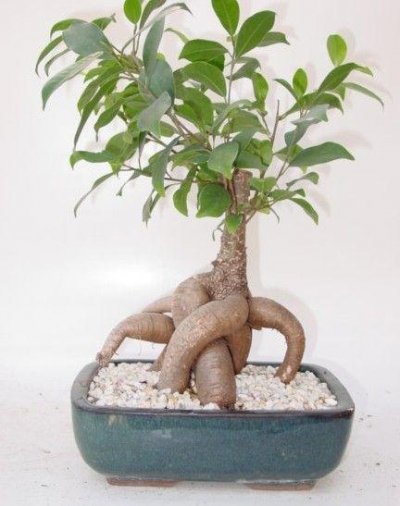
Ginseng is a ficus strangler.
Starting life with an epiphyte, as it develops, it takes root next to the host tree, entwines it and strangles it, preventing it from developing.
The fancy rhizome, for which the indoor ficus ginseng is famous, does not occur in nature.
It is grown on farms using a special technology that is kept secret.
The tree is fed with special preparations and kept in special conditions.
Towhen the root reaches the desired thickness and shape, the plant is transplanted into another container, leaving most of the rhizome on the surface of the soil.
At the same time, the trunk is cut off and new greens are built up.
Household forms with an ordinary trunk are also bred on farms.
In this case, the rhizome is hidden in the ground and the luxurious dense crown gives the main beauty to the tree.
Bonsai ficus
Home care
Ficus ginseng differs in unpretentiousness in care and endurance.
Following simple rules of care will help him develop well, not get sick and be protected from pest attacks.
It is advisable not to allow such injuries when caring for the "green friend" - the wounds on the trunk heal for a very long time.
Temperature
The tree prefers diffused light or partial shade.
The ideal place is next to the window, but as far from heating appliances as possible.
The most comfortable temperature for a given flora representative is from 20 to 23 ° C.
In the hot season, regular ventilation will be required. In this case, drafts are very undesirable.
In winter, the temperature column in the room should not fall below 16 ° C.
Watering and moisture
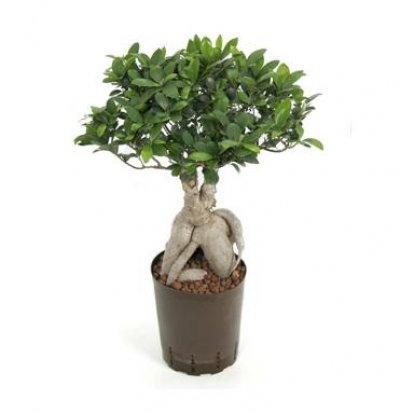

From spring to autumn, abundant watering is required, but without undue zeal, and in winter - moderate.
Waterlogging of the soil can lead to root rot.
The need for watering is easy to determine: drying of the top layer of the soil to a depth of about 3 cm is a signal that it is time to moisten the soil.
It is important to ensure that the earth does not dry out completely and the water in the sump does not stagnate.
The tree needs high humidity.
It will be very grateful for the daily spraying in the morning and evening.
It is better to take boiled water for this, otherwise a white bloom will remain on the leaves.
Also, the plant will not refuse a warm shower once a month and from regular wiping of the leaves with a damp cloth.
It is advisable that as little water as possible gets on the trunk during water procedures.
To increase the humidity, you can use a drip tray with wet pebbles.
Top dressing
From March to mid-October, it is recommended to feed the "green friend" with a mineral complex or special fertilizer for bonsai every two weeks.
In winter, feeding is reduced to once a month.
Fertilizers should be applied along with watering to wet soil.
Bloom
The tree blooms with small flowers, which bloom inside a spherical receptacle.
Later they are transformed into fruits, the so-called syconia, shaped like large berries.
At home, the tree is rarely covered with flowers, and even more so it does not bear fruit, since it should be pollinated by small wasps that live only in its homeland.
Crown formation
Ficus microcarp has very flexible shoots, so its crown can be given any shape.
If the appearance of the purchased specimen is quite satisfactory, you can save it by regularly pinching the tips of the branches.
To form a branched crown, the top of the tree is cut off, leaving no more than 5 cm of branch length.
An interesting crown shape is obtained if you choose one strong branch growing in any direction, and do not interfere with its development.
The direction of the branches is sometimes formed with wire.
To obtain a powerful trunk, it is heavily pruned several times.
It should be said that along with this procedure, a large number of leaves are also removed, which reduces the plant's need for moisture.
Transfer
"Indian laurel" needs loose and fertile soil with acidity pH 5.5 to 7.5.
You can buy a special substrate for ficuses or prepare it yourself from equal parts of coarse sand, peat, turf and leafy soil with the addition of fine charcoal.
Another option for a suitable substrate - taken in equal parts sand, humus and clay granulate.
Transferring to another pot
Transplanting into a new pot is a responsible event. It should be held every two years, in the spring. You need to ensure that the flower grows gradually, otherwise it may wither.
To transplant a flower, you will need:
- Choose a new larger pot.
- Prepare specialized soil.
- Transplant the flower into a new pot, water and put in a shaded place for a couple of weeks.
How do I choose the right time?
Transplant times depend on the climate. Keep a close eye on the condition of your flower: sometimes an emergency transplant is required, which will not depend on the season.
Basic rules for choosing the moment for a transplant:
- if you live in a hot climate, then replant the tree in March, without waiting for too bright sun;
- residents of the Central Lane and more northern regions can be recommended to start the transplant no earlier than April;
- transplanting a flower in the summer months is dangerous, at which time the tree is actively growing.
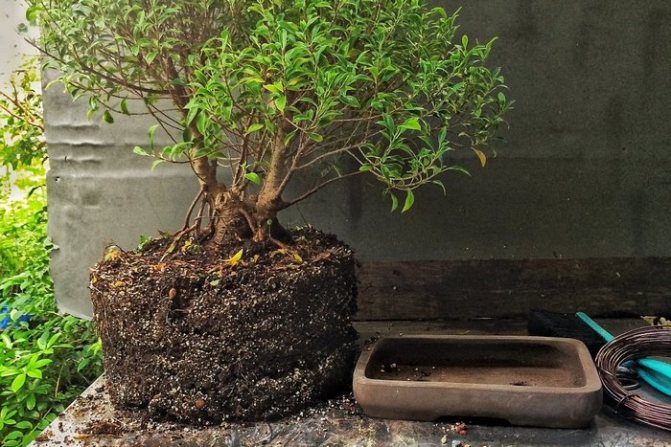

Pot and soil selection
A regular pot will not work for bonsai. You will need a special container that resembles a pallet with legs. It looks very picturesque! A minimum of soil is placed in such a pot, but it is enough for a miniature plant.
What should be the pot:
- from natural materials (ceramic);
- it has one or more holes;
- it is better if it is on legs;
- you need to pick up a pallet of a suitable shape for it.
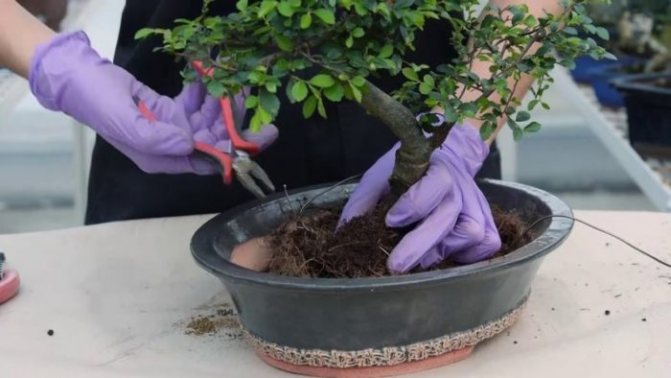

Feature! Fertile soil can easily ruin your ficus. Buy a specialized bonsai blend such as red clay capsules.
Reproduction
Cuttings
In the spring, semi-lignified are cut from the tops of the shoots cuttings 15 cm long and put them in water for a couple of hours to wash off the milky juice.
Then the cuttings are dried and planted in a peat-sand mixture with vermiculite, covered with a plastic bag and placed in a bright shaded place.
The substrate is disinfected before planting by calcining in the oven or freezing it in the refrigerator.
Rooting occurs within 2 months, after which the plant is transplanted into separate pots.
Root cuttings
In an adult specimen, a piece of root is cut off, which is planted in the substrate, leaving 2.5 cm its upper part to rise above the ground surface.
Next, the root cutting along with the container is covered with a film.
When watered once a week and regularly ventilated in 3-4 months new shoots can be expected.
After the appearance 4-5 leaves remove the film and place the young bush in a bright, shaded place and provide it with proper care.
Air layering
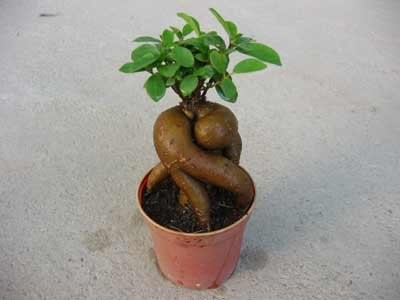

A bark ring with a width of from 2 to 3 cm.
The place of the incision is covered with wet sphagnum moss and covered with polyethylene.
Further, the moss is constantly kept wet.
After the roots appear in this place, the upper part of the bonsai is cut along with the new root system and planted in another pot.
This method is used to rejuvenate specimens that have lost their decorative effect.
Seeds
A rare method, as it is difficult to acquire seeds.
Sowing of seeds is carried out in a substrate consisting of peat and sphagnum moss.
They germinate for a long time in "Mini-greenhouse" and constantly moisturized substrate.
Getting a powerful external root at home is extremely difficult.
As already described above, this requires a special growing technology.
Why ficus?
When planning to grow bonsai, many opt for ficus. And this decision is justified. After all, culture is characterized by rapid growth. A beautiful mini tree is obtained already in the third year after planting. Therefore, ficus is ideal. The cultivation of ficus in the bonsai style is as follows. The plant is grown using twigs. When they are rooted in the water, they plant. As they grow, the trunks intertwine with each other, creating bizarre shapes.
Ficus has the characteristics that are essential for growing bonsai. Namely:
- Branched root system.
- The trunks are florid and interesting. There are corrugated or curved options.
- The bark is very beautiful to look at. In some varieties, it is smooth and light. Others are more colorful and textured.
- It takes only 2-3 years to get ficus bonsai.
- The leaves are small in size.
Diseases and pests
The tree most often gets sick from improper care.
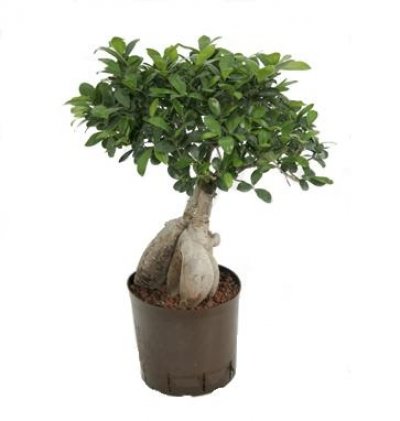

The following problems may arise:
- Green leaves fall - poor lighting, drafts, temperature drops, waterlogging of the soil, change of place.
- The leaves first turn yellow and then fall off - insufficient watering, low humidity, poor lighting in winter.
- Lower leaves turn yellow - lack of nutrients.
- Dark spots appear on the foliage and root rot develops - stagnation of water in the soil.
With the establishment of proper care, the problems disappear: the green pet quickly recovers and grows overgrown with new leaves.
If the tree is affected by root rot, treatment should be taken immediately.
It is necessary to get it out of the flowerpot, remove all diseased parts of the root and cut off part of the crown so that the “patient” spends all his strength on recovery.
Next, you should transplant it into a new substrate and pour it with a fungicide solution.
- Spider mite
- Shield
- Mealybug.
If pests are detected, insecticide treatment is carried out.
For prevention, regular foliage inspection and proper care are required.
Ficus species to grow bonsai
To grow a bonsai tree, choose any kind of ficus from the presented:
- benjamin,
- Bengal,
- microcarp,
- carica or figs,
- dull or retusa,
- ginseng or ginseng,
- rusty red
- dark-leaved.
Ficus benjamin is more often chosen for bonsai., microcarpa or ginseng.
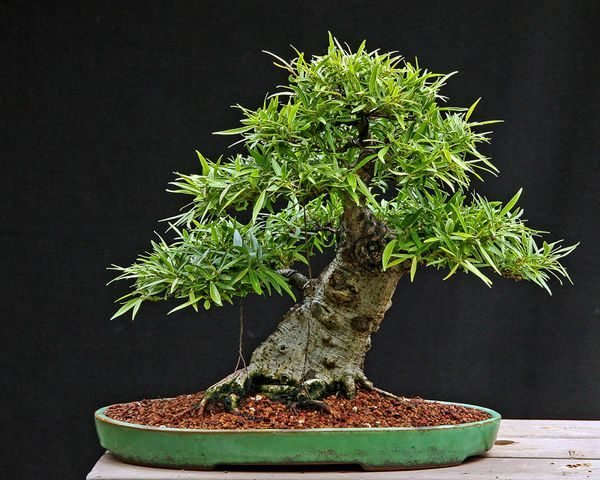

Ficus Benjamin is the most popular representative of Bonsai
In the process of creating a miniature ficus tree, three stages are important: planting, foliage and root pruning, reasonable care behind the plant and its transplant.
Benefit and harm
Ficus microcarp is not only an interior decoration, but also a very useful plant.
Indoor tree efficiently heals the microclimate in the housecleaning the air from such harmful substances as phenol, benzene and trichlorethylene.
In addition, it has numerous medicinal properties.
Tinctures and preparations made from milky juice and leaves are used to treat mastopathy and various neoplasms.
With the help of ficus, you can get rid of acne, warts and hematomas.
Also, funds from it help with arthritis, osteochondrosis and radiculitis. The tree is not poisonous and completely safe.
Ficus ginseng deserves to live in your home for a long time.
With proper home care for the Ginseng ficus, the tree can not only become an elegant decoration, but also purify the air in the room.
If you find an error, please select a piece of text and press Ctrl + Enter.
Unusual flowers always attract attention. The decorative ficus Microcarpa Ginseng also belongs to such plants. Florists use special techniques to grow it as a bonsai dwarf tree.
DIY Bonsai Styles
Shape your ficus tree in one of the bonsai styles:
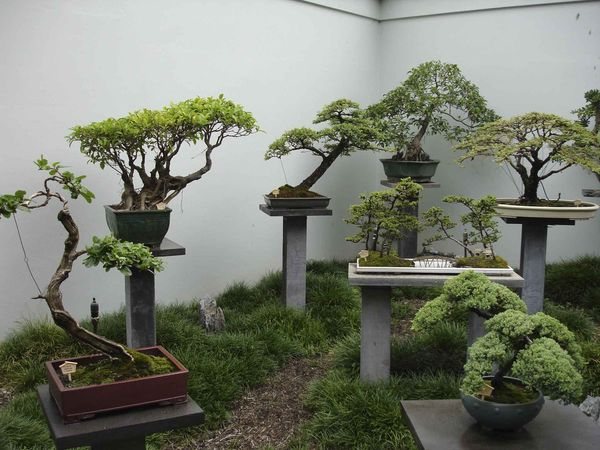

Different options for the design of the crown
- Group - separately growing trees in a row
- cascading bonsai - the trunk of the tree drops below the bottom of the container
- literary - minimal number of branches at the top of a beautifully curved trunk
- rock - roots break out of cracks in the stone
- exposed roots - large roots protrude above the soil
- floating tree - a lying trunk, from which several branches extend
- forked trunk - two different trunks grow from one root
- twisted barrel - twisted trunk, branches drooping slightly or horizontally
Show your creativity, decorate trees with decorative figurines.
In the design of bonsai, tree aging techniques are often used. "Shari" - removal of bark from a part of the trunk and "gin" - removal of bark from branches. The bark is removed above ground level, on one side only. Slices are covered with pitch.
Description of ficus Microcarpa Ginseng (ginseng)
In its natural environment, Ginseng grows in the forests of eastern China, Indonesia, Malaysia. Microcarp is planted artificially in all countries with subtropical and tropical climates, including North America, Australia, India and Japan. Ginseng decorates parks, alleys and estates.
An adult ficus is a powerful tree with a columnar trunk and thick branches. Microcarpa reaches 25 meters in height. In a forest, the plant grows many aerial roots that reach the ground, take root and woody.
In nature, ficus regularly blooms and bears fruit. Flowers are pollinated by bees of the Agaon family (agonids).Ginseng, grown as an ornamental plant, differs significantly from its "relatives" growing in forests and green areas of cities.
For indoor ficus Microcarp, the following features are characteristic:
- The tree stretches up to one and a half meters in height. Shoots form a small, neat crown.
- The trunk of the ficus is covered with brownish-gray bark. The thickened part is modified roots and has a lighter and brighter color.
- Small bright green leaves are elongated or oval in shape and petiole. They lack a pointed tip. Leaves are smooth, glossy, with a thin skin.
- Ficus Microcarpa is a perennial tree that has been growing for decades and is an ideal plant for creating bonsai.
- Ginseng rarely blooms at home. This only happens in hot summers with high humidity. Crimson-red syconia grow in the axils of leaf petioles and on the trunk. These are concave receptacles with 3 types of flowers inside. At home, flowers are not pollinated. The diameter of the syconium is up to 2 cm.
Ficus ginseng bonsai: care and cultivation
Ficus ginseng (or more commonly "ginseng") is a native of Malaysia, Taiwan and other regions of Southeast and East Asia. Ficus ginseng is an excellent choice for growing bonsai. Other names are Taiwan Ficus, Ficus Banyan or Indian Bay Ficus. It is very simple to grow bonsai from such a ficus at home, easier than from other types of ficus.
The ficus ginseng got this name because of the similarity of its trunk, consisting of several fragments, with the ginseng root. Actually, this is not a trunk, but strongly thickened aerial roots
Bonsai ginseng ficus has a gray or reddish bark, dotted with small horizontal veins that look like tiger stripes, narrow leaves with sharp tips. The ficus ginseng tree is ideal for beginners as it is very easy to care for.
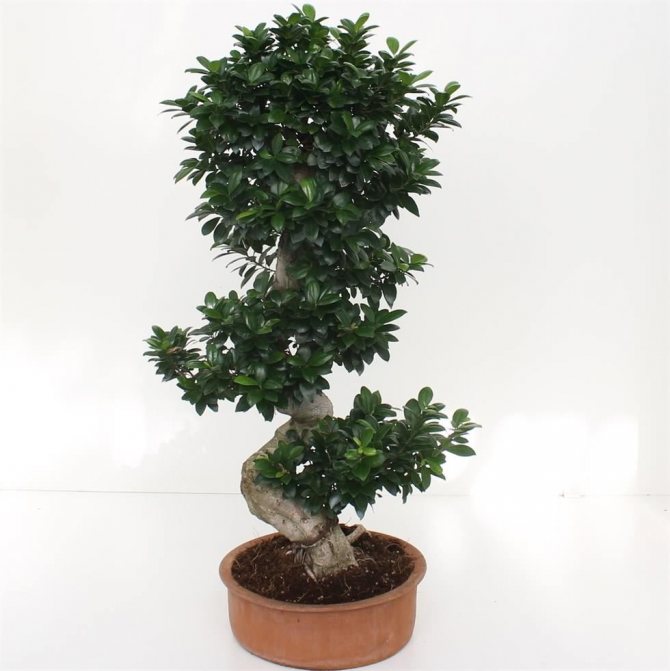

Like all ficuses, bonsai made from ficus ginseng love daily grooming, bright and long light and heat. In winter, it will be necessary to extend the daylight hours by 4-6 hours
Water until water flows from the bottom holes of the pot. You can place the bonsai pot in a shallow tray filled with a layer of moistened gravel.
Like all tropical and subtropical bonsai trees, the ginseng ficus must be pruned and plucked throughout the year. Ficus transplant - in the middle of summer. When replanting, remove ¼ of the entire root system.
Cover the drainage holes in the pot with a screen, then add a thin layer of fine gravel, then fresh soil. After placing the tree in a pot, fill in the empty spaces left by the cut roots with soil.
Avoid soil erosion when watering.
Tips for growing Ginseng at home
Ficus Ginseng can grow as an ordinary tree with a strong trunk and a developed root system. But more often it is cultivated as a bonsai. For the normal development of the plant, it is important to follow the rules of planting and care.
Landing
Ficus Microcarpa is planted in the ground in the spring, at the end of March. At this time, you need to prepare planting material - grow cuttings with roots, prepare a place for a plant, a pot and fertilizer.
The planting process includes the following steps:
- A layer of expanded clay with a thickness of 2-5 cm is poured onto the bottom of the container.
- Ficus potting soil is poured onto it.
- They make a hole in the ground, carefully lay the roots and cover them. The earth is slammed lightly.
- A layer of clean river sand (0.5 cm) is poured on top.
- Water the plant.
Ground requirements
Ficus Ginseng loves porous, permeable, breathable soil. The soil can be prepared in different ways:
- sod, leafy soil and sand in a ratio of 1: 1: 0.5;
- sod land, peat, leafy soil and sand in a ratio of 1: 1: 1: 0.5;
- a handful of charcoal can be added to the mixture.
Care and conditions of detention
With improper care, the plant is sick and may die.With constant drafts, lack of light, temperatures below plus 6 degrees, leaves begin to fall off. When the soil is depleted, the leaves become small, and the new shoots become thin. Falling foliage occurs when the air in the room is dry.
Ornamental ficus Microcarp must be provided with the following conditions of detention:
- Optimal lighting is diffused light passing through thin curtains and partial shade. Ginseng grows well on a veranda, in the back of a room with wide windows, under artificial lighting.
- High air humidity. In winter, the lack of water vapor is compensated artificially. To do this, a wide container of water is placed next to the pot.
- Compliance with the temperature regime. The optimal summer temperature for Ginseng ficus is 20-23 degrees. In the winter months - 16 degrees and above.
How often to water?
For watering, warm, settled water is suitable. You can also use boiled. The soil should dry out 2.5-3 cm deep.
Moisturizing rules:
- In the summer, do 1-2 waterings per week.
- In winter, the plant is watered every 7-12 days.
- Every week, the leaves are irrigated with a spray bottle.
Fertilizer
From March to October, ficus Ginseng is fed every 2 weeks. For this purpose, take:
- mineral fertilizers (nitrogen, phosphorus, potassium, complex);
- organic fertilizers (humus, mullein, bird droppings);
- preparations with trace elements.
Reproduction
At home, Ginseng is propagated by cuttings. Less often, ficus is bred with root suckers and air outlets:
- In the spring, an apical stalk 10 cm long is cut from a branch.It should have at least 6 leaves.
- The cut of the seedling is treated with a root formation stimulator.
- The stalk is rooted in a wet mixture of perlite and peat and covered with a plastic greenhouse.
- The greenhouse should be illuminated by diffused sunlight, but not direct rays.
- A month later, when the first roots appear, remove all the leaves, except for the top two.
- After 2 weeks, the cutting is fed with a weak solution of organic fertilizer.
- After 3 months, Microcarpa ficus is transplanted into a pot with a diameter of at least 10 cm.
Transfer
The transplant is an important element of care. The powerful ficus root system quickly recycles the soil and suffers from tightness.
The transplant is carried out in February or in March:
- Young plants are annually transferred to a new container.
- Adults - once every 2-3 years.
- Mature plants that grow in a pot with a diameter of 30 centimeters or more do not need to be transplanted. Florists simply change 3 cm of the topsoil to fresh soil.
Diseases and pests
Ficus Ginseng is affected by fungal diseases: gray rot, black fungus, rust, powdery mildew, late blight. At the same time, the state of the leaves changes - shine is lost, spots of brown, gray, black, whitish, yellow appear. The foliage curls up and turns pale.
Fungi are destroyed in the following ways:
- Affected leaves and shoots are cut and burned.
- Healthy leaves are treated with fungicides.
- If black phytophthora, pythium and rhizoctonia fungi are found, which settle on the roots and trunk, the tree will have to be destroyed.
Thrips, mealybugs, aphids, whitefly and scale insects pose a danger to ficus. The best insect repellent is insecticidal preparations.
You can get rid of pests with folk remedies. Ficus is irrigated with soapy water, garlic or tobacco infusion.
Tree shapes
It is very important to think in advance what shape the plant will have. Pruning branches in a mess will get you nowhere, and you may even ruin the sprout. The wise Japanese have already come up with all possible forms. You just have to choose the appropriate style and proceed strictly step by step.
Basic bonsai styles:
- Tekkan;
- moyogi;
- Shakan;
- Sokan;
- Hokidachi;
- Yesueue.
Tekkan
Tekkan shape is classic, pyramidal. It is characterized by a straight trunk. The Japanese believe that Tekkan is a style inspired by nature itself.This is what trees growing in open areas look like. They develop harmoniously because they have enough light and nutrients.
The main characteristics of the Tekkan style:
- a straight trunk with a lower part free from branches;
- proportionally developed branches without strong bends;
- powerful root system;
- harmonious crown of a pyramidal shape.
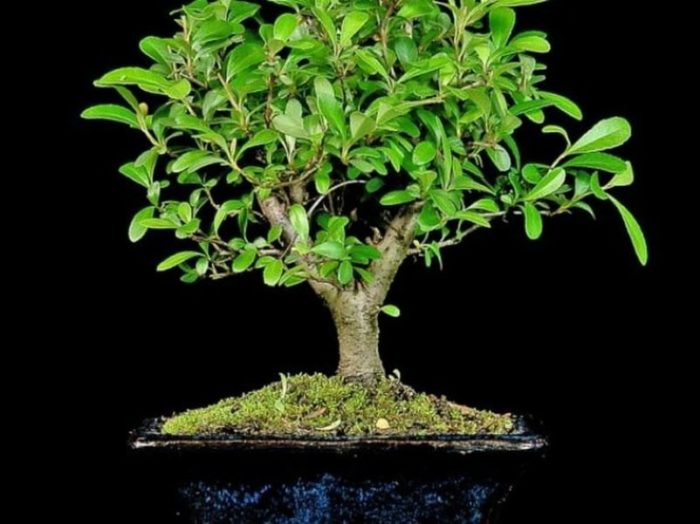

Attention! Modeling a crown in the Tekkan style is the easiest option for beginners.
Moyogi
The moyogi style is characterized by a slight curvature of the trunk. The appearance of the ficus plant resembles Tekkan. The plant is upright, with straight branches and a harmonious crown, but the trunk does not look as regular as in the Tekkan style. It bends in one or more places. This gives the tree a more romantic look.
Main characteristics of the moyogi style:
- the trunk is represented by several curved lines;
- the trunk decreases proportionally from the base to the top;
- the crown is balanced in relation to the trunk.
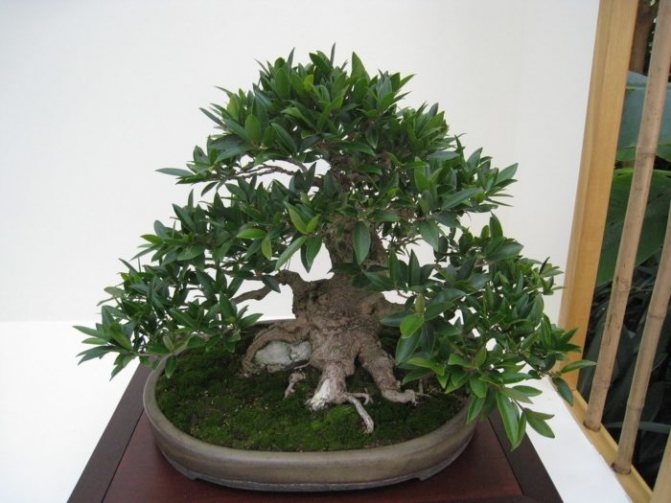

Shakan (twisted)
Very interesting shape! An inexperienced grower is unlikely to be able to achieve such an effect. The tree looks as if it is slightly tilted to the side by a strong wind. On the opposite side, the roots are bare, their texture is clearly visible.
Features of the Shakan form:
- the slope of the tree is not less than 30 degrees;
- the crown is more developed on the outer (upper) part of the plant;
- the shape of the branches follows the logic of the slope.
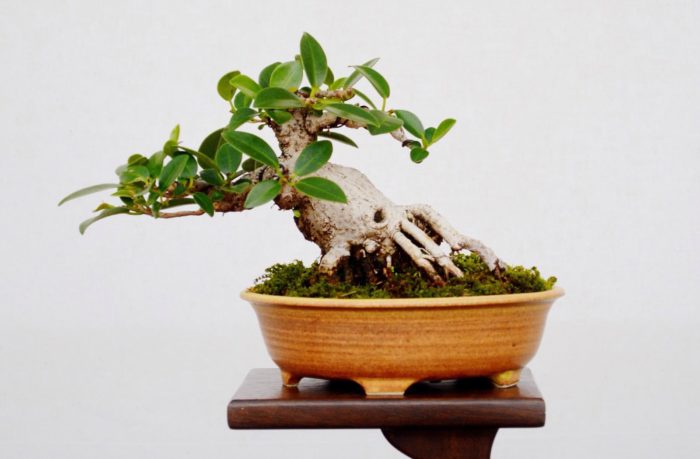

Sokan (double barrel)
In this case, the tree has two trunks. The first is more powerful, the Japanese call it "parent". The second one is smaller, it is a “child”. The skill of a florist is to grow a tree with powerful trunks that match each other in shape.
Features of the Sokan style:
- bifurcated trunk;
- common root system;
- the division begins as close to the roots as possible.
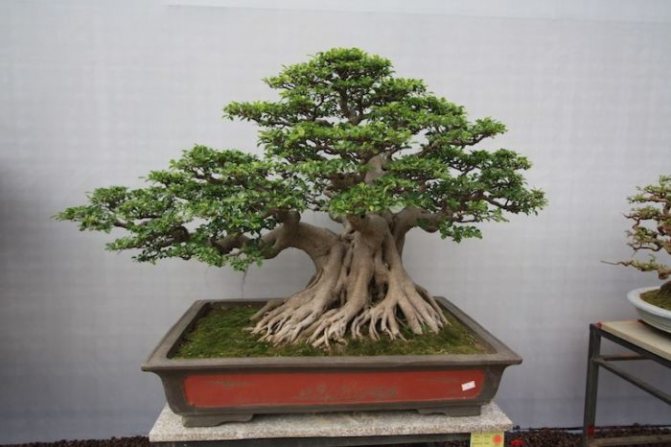

Hokidachi (broom form)
A tree grown in the shape of Hokidachi resembles a broom. This is difficult to achieve, although such a bonsai looks quite natural. This style has many requirements: it is important that the branches and roots diverge from the trunk in the same way.
Hokidachi design features:
- branches do not intersect with each other;
- branches grow at the same distance from each other;
- spherical apex.
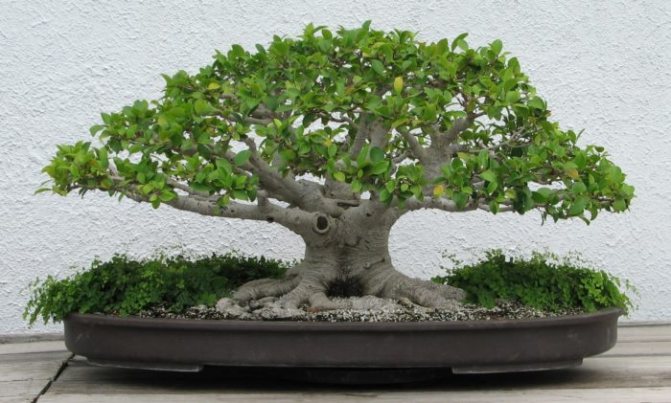

Yesueue (forest grove)
This style assumes that in one container the grower grows not one, but several types of trees at once. It is no coincidence that the name of the style in translation from Japanese means "forest grove".
The main features of the Yesueue style:
- the number of trees is at least five;
- plants of different ages;
- the oldest and most powerful plant is planted in the center.
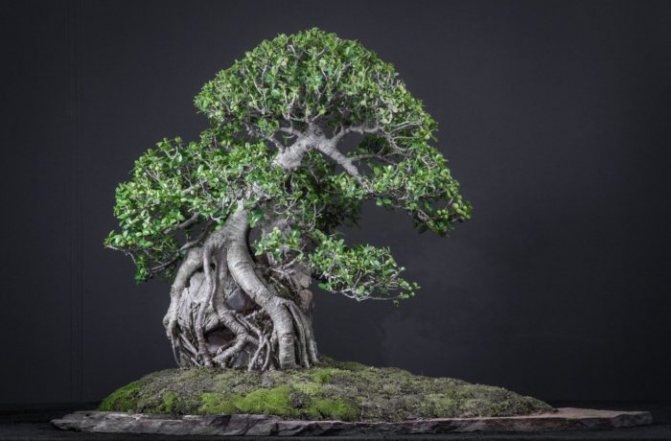

How to mold a thick-stemmed bonsai from Ginseng?
The formation of a thickened trunk is best done in young trees. The root system of this type of ficus is powerful, and thickened roots are formed even underground.
Trimming the root system and shoot is combined with transplanting into a new container:
- Ficus Ginseng is removed from the pot, the roots are freed from the ground and washed in water at room temperature.
- The roots are cut with pruning shears or scissors. Some growers advise cutting 30% of the length. Others advise removing no more than 10%. Dried, dead and thin live roots are removed completely.
- Sections are treated with crushed activated carbon.
- The plant is planted in a pot. The upper roots are left above the surface of the soil (one third or half of what remains in the ground).
- At a distance of 4.5-5 cm above the root collar, the trunk is cut off.
- The cut is sprinkled with coal dust.
- When the shoot grows and lengthens by 5-6 cm, the pruning is repeated. With this procedure, the roots thicken, and the plant takes on the characteristic Ginseng bonsai shape.
- The trunk is stopped to be cut when the desired thickness of the aboveground roots is reached.
- After a while, the plant throws out shoots and leaves.
Active crown pruning is carried out in spring or summer, when 6-10 leaves grow on the branches. At least 2-4 leaves are left on the shoot after forming.
The branches grow unevenly and the crown can be trimmed constantly. You should not cut the leaves in half, trying to achieve perfect shapes, only cut the branches.
Ficus Microcarpa Ginseng is unpretentious, easy to care for. This flower has a sophisticated, modern look. Bonsai with a root resembling a mandrake fits perfectly into any interior style.
Step-by-step instructions for forming a plant
How do flower growers achieve miniature tree sizes? In fact, it is not that difficult. The main principle is limiting growth. Constant pruning of roots and crown is carried out, plus the tree is planted in a very small pot.
The scheme of actions for the formation of bonsai:
- Planting the offshoot into a special container.
- Root pruning as the root system develops.
- Modeling the trunk (as it grows).
- Giving the crown to the desired shape by constant pruning.
- Transplant the plant every two years.
Crown
It is necessary to form a crown in plants that have already matured. The crown shaping tool is constant pruning. We do not allow the tree to gain growth, but we force it to grow in width. Over time, the trunk grows, becomes more powerful and wider.
Important! Don't be afraid to prune your plant. It rapidly increases the amount of green mass. In winter, the ficus does not grow so quickly, so you need to stop pruning.
Things to remember:
- pruning is carried out in the warm season;
- pruning is done on plants older than six months;
- the places of the cuts must be processed;
- trimming is done from bottom to top, not vice versa.
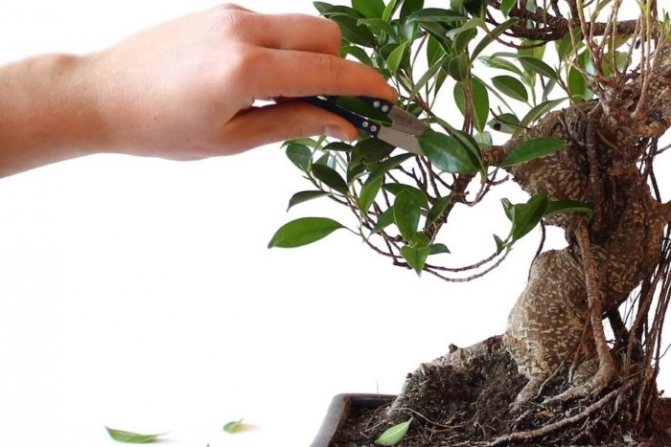

Attention! To form a true bonsai, it is very important to regularly pinch the upper bud. Usually, half of the leaves that have grown are cut off.
Roots
The appearance of the root system is of particular importance for bonsai. Some of the roots should be above the soil level. How this can be achieved:
- cut the roots every six months;
- transplant the flower regularly into a wider pot;
- position the roots above the drainage layer.
Trunk
Working with the barrel is a separate challenge. At the initial stage, it is better to choose an upright shape - for example, Tekkan. If you already know all the features of bonsai well, then you can start experimenting with changing the shape of the tree. This is done by locking the barrel in the position you want. After 6-8 weeks, the plant remembers this shape and no longer straightens. The bend of the trunk is done with a garter.
You can use a wire that is wrapped around the barrel to give the desired shape. At the end of the operation, the wire must be cut.
What is important to remember:
- after transplanting, let the plant rest, do the garter or wire rewinding later;
- do not tighten the wire too tight;
- the new form will be fixed in about a couple of months;
- do not unwind the wire, as this can damage the plant.
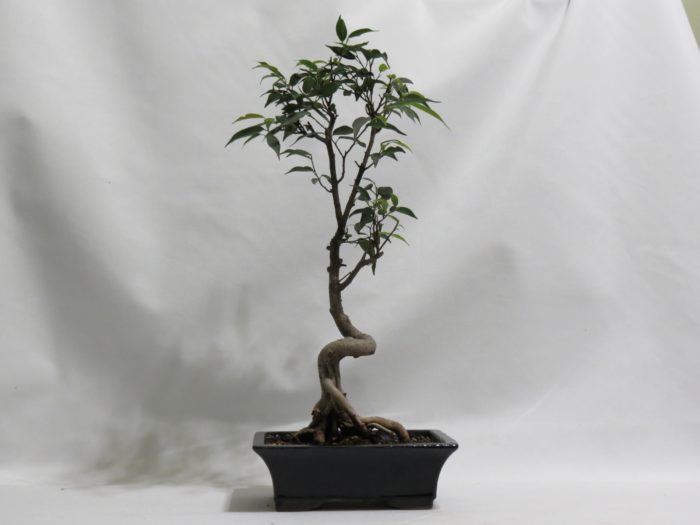

Home microclimate
Ficus - plant in care unpretentious, but try to place it in a place where there will be no direct sunlight and temperatures below 17 degrees. Do not put ficus next to batteries or very far from windows.
Watering conditions
When watering microcarps, you must observe a few rules:
- water when the potted soil is dry 2-3 cm deep (can be measured with a ruler, the same distance = phalanx of the thumb)
- the tree is very loves spraying and rubbing leaves when spraying water, be careful not to touch the trunk and aerial roots of the plant.
- Watering itself can be once a week or even less, but it is necessary to spray the plant with water almost every day.
Care: fertilizers
To properly care for your microcarpa, fertilize the plant every 2 weeks. You can alternate between mineral and organic fertilizers.
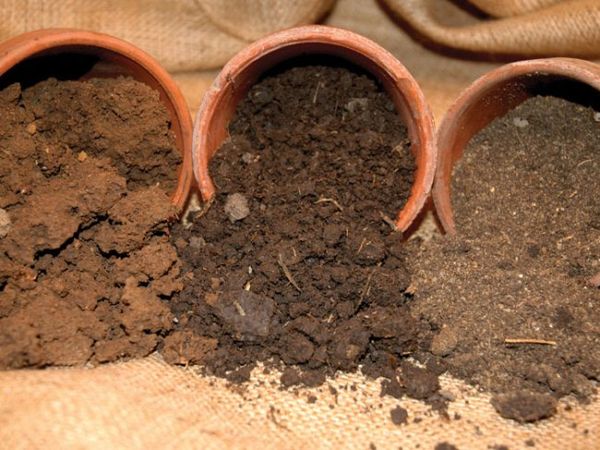

Choose the right ficus soil!
Microcarp transplant
Transplant ficus at a young age every year, and then every 2-3 years.
May Help: Ginseng Ficus Leaves due to Adaptation to New Conditions fall off within 2 monthsafter you brought it to your home. Then repot it every year until the leaves begin to change for new ones, and then repot after the renewal of the leaves. This will make it easier to keep track of how many years are left, because the normal lifespan of ginseng leaves is 3 years.
Ginseng ficus soil can be used specialized for ficuses (must be slightly acidic or neutral) or compose it yourself... To do this, you need to take sand, leafy and sod land in a ratio of 1: 2: 2. you can also add charcoal or peat soil.
Exists the misconception that bonsai should not be replanted, but only to cut the growing roots, so this is not true. Since ficus ginseng, like other ficuses, contains poisonous juice, it also poisons the soil under it, so it must be transplanted.
Ficus bonsai care
The birthplace of interesting and unusual art of bonsai is China. It is the cultivation of real trees in miniature form. The first mentions of this unique art form appeared 2000 years ago. A little later, the Japanese adopted this art and learned to masterfully use dwarf trees in landscape design.
Usually, pomegranate, olives, oleander, bougainvillea are taken to create bonsai. At home, it is recommended to grow bonsai from ficuses - evergreen shrubs that are quite unpretentious in content. However, in classic Japanese bonsai, ficuses are not used.
Making bonsai at home
Bonsai can be made from many plants. In particular, blunt ficus and Benjamin ficus are very good for growing them. They grow quite quickly, so you can get a full-fledged bonsai in a couple of years.
The advantages of ficuses are obvious: they practically do not need a winter dormant period and can be kept in a room without any problems. Although it is useful to grow them outdoors in summer for healthy development.
Ficuses survive well at home. Ficus Benjamin must be transplanted once a year. If the leaves suddenly fell, you need to look for the cause in low light or a change in habitual living conditions.
This is a thermophilic plant, it loves a temperature of + 12-18 degrees, and in winter it should be placed in rooms with heating devices, and in summer it should be exposed to the open air - in a garden or on a loggia, balcony, gradually accustoming the plant to direct sunlight.
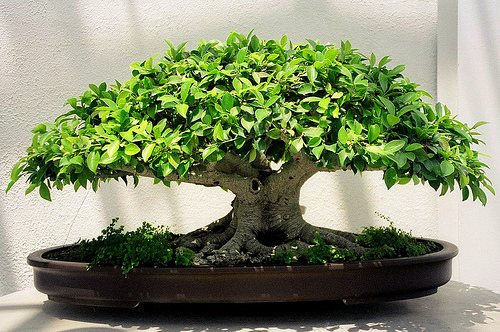

As you know, bonsai is a mini copy of a tree, which is formed in compliance with special rules for pruning the crown and roots. It grows millions of times smaller than its wild-growing relatives. It is grown in a special bowl-shaped container that resembles a flower pot. The depth of the container for growing bonsai should be small, but it is advisable to choose a larger area. For an average bonsai tree, about 30 cm high, a bowl with a depth of only about 3-5 cm is suitable. The container should have legs from 8 to 15 mm high and large holes for excess water to escape. The hole diameter should be about 1 cm.
Before planting a tree, drainage holes must be closed with a mesh with a mesh of 2-3 mm. The bottom of the container is covered with coarse sand, which will act as a drain. Next comes a layer of basic soil. The plant is carefully cut off the roots and placed in this container. To the level of the root collar, they are covered with earth. The soil for planting should be light. After planting, the soil should be tamped, but not very tightly.
Basic rules for caring for ficus bonsai
Caring for ficus bonsai is not particularly difficult compared to growing it. To grow bonsai, break off a few branches of ficus and root them in water, then plant them in a flat pot next to them and twist them together as they grow.When the root system is solidified, gradually strip it out.
In order for the twigs to grow together, you can scrape off the skin a little at their contact points and secure with wire. But it needs to be changed periodically so that it does not grow into the tree. Shape the crown at your discretion, the plant is plastic and bends easily. With the help of a wire, the barrel can be given any bend.
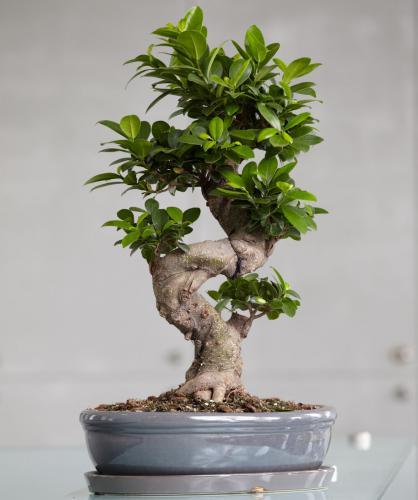

Be patient and do not cut the branches too radically, otherwise the buds will wake up on the trunk and give thin side shoots.
Caring for ficus bonsai requires moderate watering, but it is impossible to allow the soil to dry out. When watering, water should seep through the ground almost immediately. If this does not happen, then you have tamped the ground too much. It can be loosened with vermiculite or regular sand. Loosen the soil more often and carry out daily spraying with settled water at room temperature.
In the spring-autumn period, a couple of times a week it is necessary to feed the tree with any complex fertilizer. In the spring, every two years, the tree needs replanting, and do not forget about drainage.
Do not be alarmed if after transplanting your ficus leaves fall off, after two to three weeks the crown will again delight you with abundant greenery.
Ficus bonsai, like other ficuses, does not like dry air, drafts, too low or, conversely, high air temperatures.
During the growing season, the ficus needs additional lighting. A fluorescent lamp on a bracket is ideal. When the plant is dormant, no additional lighting is required.


So, the basic rules for caring for ficus bonsai:
- Correct lighting. Direct sunlight is undesirable, but the tree will grow well in a well-lit room.
- Maintaining air humidity. The air in the room should not be too dry. The tree can be sprayed with water from a spray bottle several times a week.
- Correct watering.
- Transplant as the roots grow.
The best way to learn the art of bonsai is to start with the ficus tree. Growing this undemanding plant, you will gain the invaluable experience that will help in the future to grow a more traditional type of tree. In addition to ficus, for a start, you can try to grow plants such as muraya, podocarpus, myrtle or carmona.
See also: Grapes Volgograd care
How to create Ginseng ficus bonsai?
This ficus is considered one of the easiest to create bonsai and is suitable for a beginner.
If you bought a ficus plant in a nurserythen the bonsai shape is already done. It remains only to support it by pruning protruding roots and new branches.
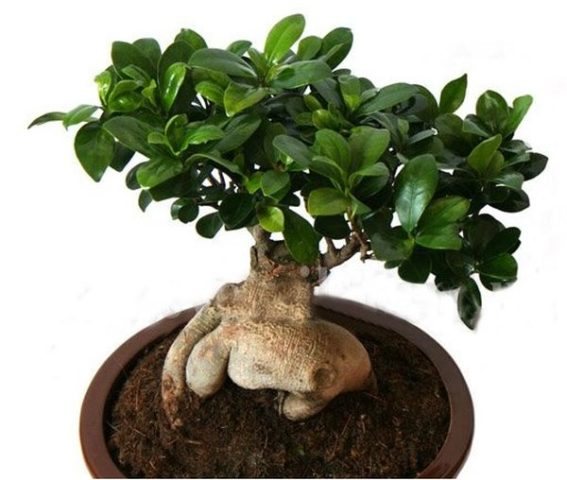

How to create a ficus bonsai tree?
If you want to change the shape of your bonsai, then you should adhere to the following sequence:
Trunk formation
Pruning the main shoots leads to an increase in the side branches, the material for the crown increases.
Trunk garter
You can start with a straight stem, this is the simplest form. For the appearance of bends choose one of the ways:
- Tie the top of the crown to the trunk neatly with threads
- Caution tie wire ficus from base to branches. After 7-8 weeks, cut the wire, being careful not to damage the leaves.
Crown formation
Ficus has new branches and leaves fast enough... True, there are cases when, after the first transplant, the plant stood without leaves for about 2 months. Use small scissors to cut the branches until the desired shape is obtained, the places of the cuts should be grease with garden varnish... Next, you need to cut the petioles of the new leaves, leaving about a third when they have grown to 10 leaves.
Appearance
Ficus bonsai looks very impressive: we have a real tree in front of us, only a small one. He has a developed trunk, a neat crown. Everything is as in the picture! Such a masterpiece can be grown in just a couple of years. This is facilitated by the rapid growth of any species of this culture.
The main features of the appearance of ficus bonsai:
- powerful branched roots;
- bark with an interesting texture;
- dense leaves.
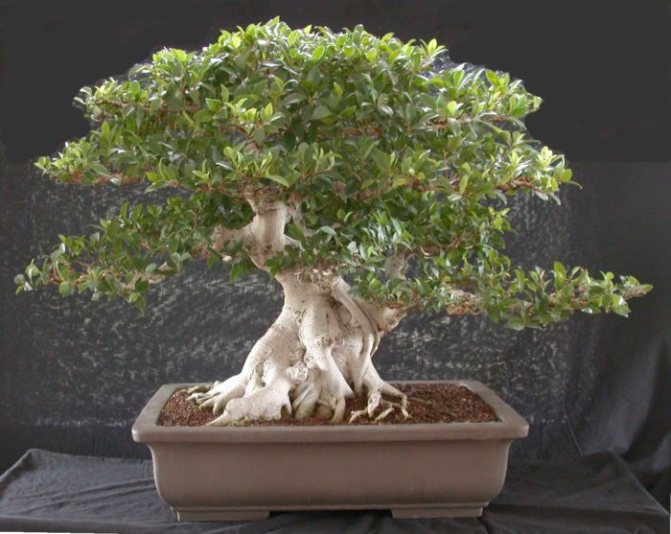

Reproduction ficus microcarpa ginseng
Propagation by cuttings
Breeding order by cuttings
The container with cuttings should be placed in a bright place, not in direct light... Ventilate and moisten the soil periodically. After 2 months, plant cuttings that have roots in separate pots.
Propagation by root cuttings
In an adult plant, cut off a part of the root, leave in water for a couple of hours and plant in the same peat-sand mixture, leaving 3 cm above the surface, cover with plastic wrap. Water like an adult plantventilate regularly. When several leaves have appeared, remove the film.
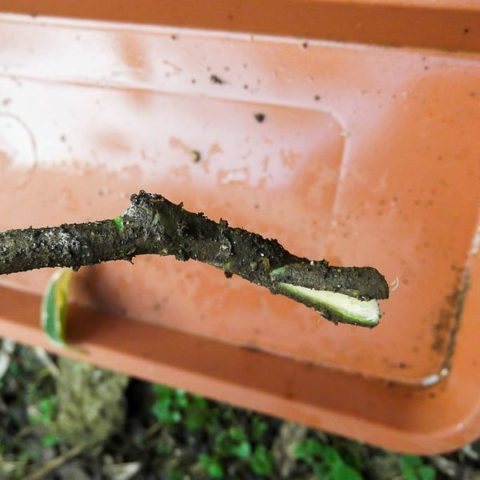

Rooting ficus cuttings
Air layering
Wrap a bark ring 3 cm wide with sphagnum, and on top with plastic wrap. Ventilate, keep the moss moist. After the appearance of the first roots cut off the top and transplant into a separate container.
Seed propagation
The rarest way due to the massive sale of mature plants and the ease of vegetative propagation. It is necessary to create a lot of moisture, put peat and sphagnum on the bottom, close it with a bag or a transparent lid.
What to do if leaves fall?
The loss of leaves is a sign that the flower does not like something. This can be dryness or over-watering. You will need to remove the plant from the pot and examine the root system.
If the roots are rotten, it is recommended to ventilate the room more often and water less often. If the roots are dry, then you need to remember about watering! Sometimes the roots are all right, the plant just asks for more light.
What to do if leaf loss has already occurred:
- Increase lighting.
- Place the pot in a warm place.
- Let the soil dry.
- After that, water as usual.
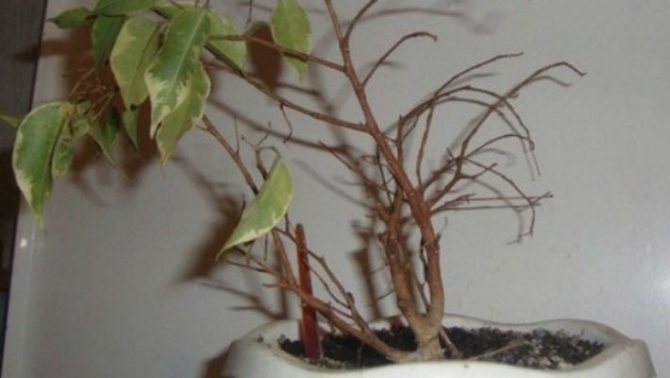

5 / 5 ( 1 vote)
Problems with growing miniature trees
Ficus bonsai immediately responds to florist errors with a sharp deterioration in appearance. It is much easier to restore decorativeness to the plant if you start to act immediately. Therefore, it is important to learn how to interpret the "signals" sent by the tree and know what to do in each specific case.
Table: how bonsai reacts to mistakes in grooming
| Problem | Cause | How to fix the situation |
| Bonsai is losing leaves |
| Move the bonsai to a warm place with diffused light. Adjust the watering mode, moisten a little, but often (carry out the procedure immediately after the top layer of the substrate in the bowl dries). In about 3-4 weeks, new leaves will grow. |
| The roots are dry | insufficient watering | Water the bonsai frequently as the soil dries out very quickly. If the roots do not break in the hands, then the plant can recover. To do this, you only need to adjust the watering mode. It will help the moss retain moisture. Cover the roots with it after the procedure. |
| Brown spots on the tips of the leaves | too high room temperature or dry air | Spray the plant more often, cut off damaged leaves. |
Correct care
Of course, caring for bonsai has its own nuances compared to growing a "classic" ficus. We must not forget about the tree even for a day.
Location
Benjamin Ficus Bonsai can be grown on a West or East window, and trees grow well in partial shade.
Bonsai can be placed not only on the window, but also inside the room.
Please note that the ficus does not tolerate cold drafts and sudden changes in conditions of detention.
Watering and spraying
Since the bonsai grows in a small container, accordingly, the soil in it dries out much faster than in a large tub. Water the mini ficus in moderation, but every day. Leaves need extra moisture. To do this, spray them every day in spring and summer (on hot days this can be done twice a day).Or, place a bowl of water or an indoor fountain next to the plant. This will help to raise the air humidity in winter, if the tree stands next to radiators or other heating devices. By evaporating, the water will provide the necessary level of moisture for the plant.
Fertilization
The plant grows in a confined space, so nutrients are washed out of the soil incredibly quickly. For rapid growth, it is necessary to make top dressing all year round. Use special complex fertilizers for ficuses or palms, for example, Pokon or Agricola preparations are suitable.
Take the drug itself half as much as indicated on the package (half-strength solution).
Feed the bonsai every two weeks in the spring and summer, and reduce the number of treatments to one per month in the fall and winter.
Planting a tree
With a transplant of Benjamin ficus purchased in a store, you need to wait 12-15 days, allowing the plant to adapt to new conditions. A self-rooted stalk is planted 2–2.5 months after the planting material gives the first roots.
Planting and further care procedure - step-by-step master class
- Cut a few top cuttings 8–12 cm long from a healthy ficus, treat the cut sites by sprinkling them with crushed chalk or activated carbon. Dry for 2-3 hours. Usually, the cuttings have 3-4 leaves and 1-2 points of growth, from which the plant will later release aerial roots.
- Place the cuttings in water or a solution of a root formation stimulant (Epin, Kornevin, Topaz, Heteroauxin, potassium humate). Trim the bottom leaves if necessary.
- Maintain a constant temperature of 25-27 ° C, bright light. If possible - bottom heating.
- Cover the bottom of the selected bonsai container with a special cloth, similar to a mesh with fine meshes (2-3 mm). Pour coarse river sand (layer thickness of about 0.5 cm) and substrate (no more than 2.5-3 cm) on it.
- Place the plant in the right place, placing a small stone under the roots, gently spread them and sprinkle them with soil, forming a low hill. The soil layer does not reach the top edge of the pot by 1–1.5 cm. Lightly compact the soil. The root collar should be at ground level. Take a stone that resembles a natural rock as much as possible. A shard of brick or a piece of decorative cladding panel will definitely not work.
- Water the ficus well, after 25-30 minutes drain excess moisture from the pan.
- If you plant several cuttings in a pot, they can be intertwined until the trunks are lignified. This will not cause any harm to the plants. To secure the result, tie the ficuses in the right place, placing a thick soft cloth under the rope or twine. To speed up the healing process of cuttings, peel off a layer of bark about 0.5 mm thick and use a special spray.
- When the ficuses are well rooted (after about 4 months), start to scoop up the soil from the roots little by little, gradually exposing them. It will not harm the plant. The older the ficus, the more imperceptible the procedure is for him.
- When the tree grows to the desired height (after about six months), pinch the top and start forming the crown.
- Optionally, you can decorate the pot with moss, colored pebbles, decorative stone figures, oriental symbols, without covering the twisted roots. But you shouldn't get carried away. The abundance of decorations inevitably distracts attention from the tree itself and is not welcomed by Japanese tradition.
Ficus pruning methods
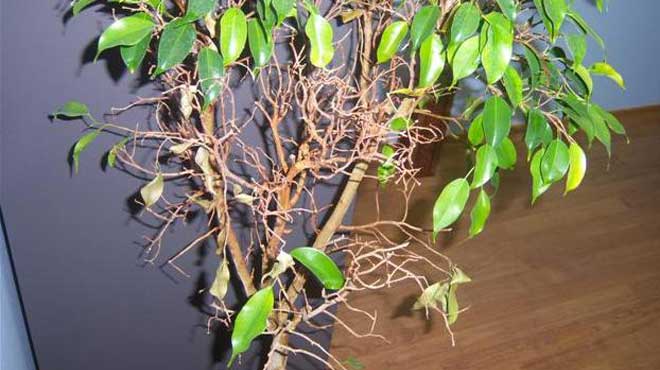

Usually, the procedure begins with aerial roots, giving them the proper look. To create a lush crown, you must regularly trim the main trunk. This leads to the fact that it increases in diameter, and the crown, in turn, becomes larger in breadth.
Important! Formation begins only when the trunk is thick and strong enough.
Taking into account the fact that the ficus quickly "grows" the leaves, pruning should be done at least once every six months. Branches, on which up to 10 new leaves have appeared, are shortened so that in the end no more than 4 leaf plates remain. Trim the tree from the bottom. The juice that appears in the cut points is not rubbed with anything.
The mistake of many is that they only cut sheet plates. The tree grows, new branches appear, but at the same time, there is no bonsai as such, because gardeners have created a “naked” plant, not a masterpiece.
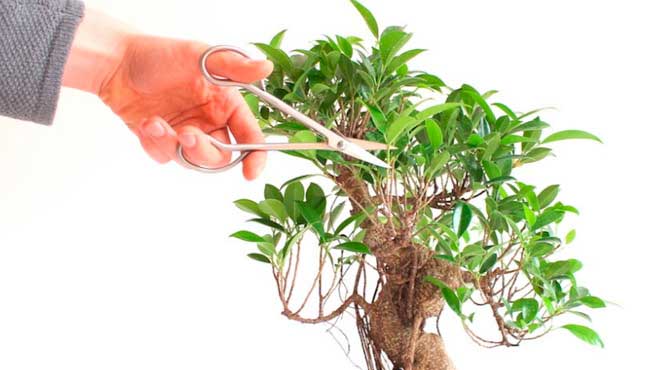

If there is too much green mass, it can be removed a little, but only in early spring. Until autumn, only small adjustments should be made to preserve the shape of the tree. From October to March, the flower is not touched, because at this time it enters the dormant stage.
As for the shape of the trunk, it will not be difficult to create the desired one. Experienced gardeners recommend using twine, which can be used to tie the desired branches to the base.
As stated, wire is a bad option. However, if nothing else can be found, then you will need to take the thinnest one and put some kind of soft tissue under it.
It is impossible to wrap after transplantation earlier than after 4 weeks. After the expiration of this period, you can start manipulating. To do this, you will need to strictly move from the bottom up. After 1.5-2 months, when it is possible to obtain the desired shape, it is necessary to cut the wire.
The procedure for planting and transplanting trees
There is nothing complicated in the transplant procedure itself. It is important to properly prepare for it by choosing the right pot and the right substrate. Think about the composition in advance. One tree looks pretty lonely. Choose a decor that matches your style for more authenticity.
Seedling preparation
The formation of Benjamin's ficus in the form of a bonsai must be started immediately after the seedling is rooted. The latter is easy to obtain from a cuttings dipped in water at room temperature. For this you need:
- cut off the top of the shoot;
- treat the "wound" with a root stimulator (Kornevin, Epin);
- put the cutting in water. In about a week, the future bonsai will take root;
- after a few days, plant a new plant in a bowl.
Trim the roots first so that the ficus does not grow too quickly.
Choosing and preparing a container for planting
To grow Benjamin Ficus Bonsai, prepare a shallow but wide bowl. It should be quite heavy and stable, so a ceramic container is the best option. It is imperative to have holes for the drain of excess water. Before planting the ficus, the container must be thoroughly washed.
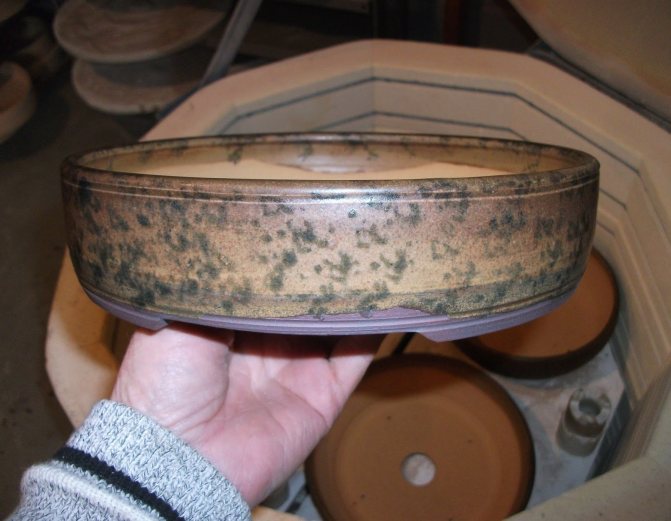

A bonsai flowerpot needs a shallow but wide
Soil mix
Ficus is an unpretentious plant, it grows well in any soil. However, for his better well-being, it is recommended to formulate a nutrient substrate from the following ingredients:
- fertile turf (1 part);
- sheet land (1 part);
- sand (1/2 part);
- some charcoal.
If it is not possible to make up the soil mixture on your own, you can use ready-made soil for ficuses or a universal slightly acidic substrate.
To aerate the roots and remove excess moisture, it is necessary to arrange drainage. Since bonsai cultivation requires a shallow container, this layer needs to be formed in a special way. Cover the holes in the bottom with a plastic mesh with fine meshes, put a layer of coarse sand on it, and then a little substrate (layer 2-3 cm thick).
Bonsai transplant: step by step instructions
For the first three years, Benjamin ficus bonsai needs to be replanted annually, with a complete replacement of the substrate. The new container should be 2-3 cm wider and 1 cm deeper than the previous one.
- At the bottom of the bowl, arrange a drainage of coarse sand, covering the holes with a plastic mesh.
- Pour in the substrate, filling 1/3 of the flowerpot volume.
- Remove the bonsai from the old pot, shake the soil from the roots and rinse them in warm water.
- Cut the roots in half. Cut thin filamentous roots completely. Treat the "wounds" with crushed activated carbon.
- Place the plant in a bowl and cover with substrate so that the upper third of the roots remain above the soil surface (if the chosen style requires it). Gently compact the earth (without tamping strongly), water and cover with sphagnum moss on top.
Additionally, you can decorate the composition with pebbles, colored sand, pieces of bark, figurines that match the style, and so on.
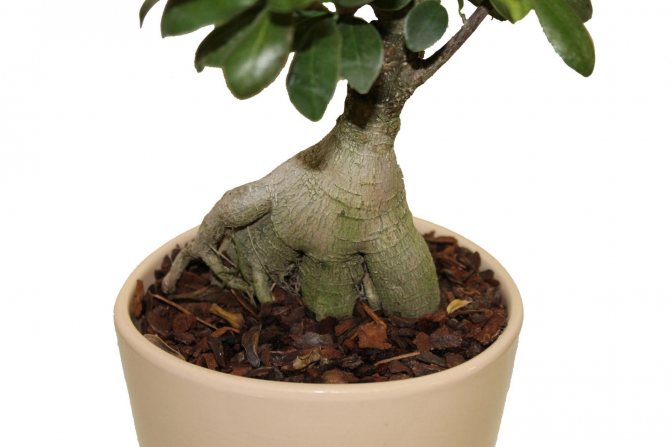

Young specimens should be replanted annually.
How to choose a pot and soil
Many are familiar with bonsai, but not everyone knows that in Chinese this word means "grown in a tray", so there can be no question of any deep pots. The container should be small, but equipped with drainage holes.
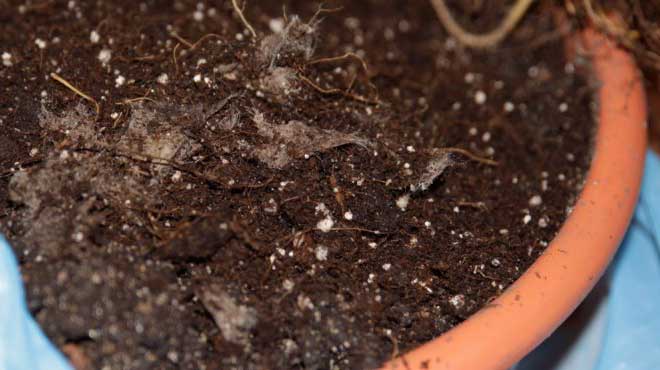

As for the soil, preference should be given to a light substrate that would freely pass both water and air.
It is best to use akadama - red clay for miniature trees. In the absence of such in a flower shop, you can buy a mixture for mulberry or palm trees.
Many growers prepare the soil themselves. It can be composed of different components.
For example:
- Powdered clay, coarse river sand, fertile loam and peat chips are taken in equal proportions, and all this is mixed.
- Soil for ficuses or palms (3 parts) is mixed with sand, vermiculite, perlite (1 part).
- Powdered clay (6 parts), leaf humus (1 part) and sand (3 parts) are also mixed together. Some also add pine bark powder to this mass.
- Leaf humus (1 part), vermiculite or perlite (2 parts), expanded clay or pebbles (4 parts) and leafy earth (6 parts) - make up a good base.
Tips for Beginners
To grow a beautiful healthy ficus, recommendations should be followed.
- If you want to grow bonsai in a group style or in a form with a double trunk, several plants are planted at once in one bowl. They can be twisted together or secured in another interesting way for splicing the trunks.
- It is necessary to maintain conditions for a young plant favorable for rapid growth: the ficus does not tolerate drafts, lack or abundance of the scorching sun. Timely watering is important according to the season: moderate winter, plentiful in summer. A common problem in growing Benjamin ficus is leaf dumping, which can occur if the earthen ball is overdried or if the lighting rules are violated.
- The transplant is carried out once a year, preferably in the spring, while the plant is young, then less often. Before transplanting, the plant is not watered for several days. Carefully pull the bonsai out of the container by the trunk to avoid damaging the roots. Examine the root system carefully. If the earth crumbles easily, it means that the roots have not yet filled the old pots, and you should not change the container to a larger one. Long roots are cut, tangled, strayed in one direction, gently straightened with a wooden stick. You can cut up to 1/3 of the total volume of the roots.
- After pruning, the ficus is planted in a bowl pre-treated with boiling water. Drainage layers are laid out, the plant is seated and fresh nutrient substrate is covered. Bonsai is held by a moist compacted earthy coma. If this is not enough, then it is secured with copper wire through the drainage holes in the pot.
- The main point of bonsai cultivation is its correct formation. There are several methods for this: cutting off branches, reshaping with copper wire, peeling off the bark. It is necessary at the initial stage to determine the desired form and strictly follow it. For a beginner, choose a simpler form in a formal or informal straight style.
- To form a bonsai, pruning of the branches of the ficus tree is required. With its help, the growth of the apex is inhibited and the trunk thickens, the skeleton is formed. It is undesirable to touch the leaves: they will turn yellow and fall off. It is necessary to carry out pruning not only to create a shape, but also to constantly maintain it, since the plant inevitably overgrows and loses its decorative effect.
- Pruning ficus roots and branches is traumatic and dangerous, especially when done on a young plant. There is a risk of infection, decay and / or death of the entire plant. To prevent diseases, the cut sites are treated with liquid balsam varnish or activated carbon.
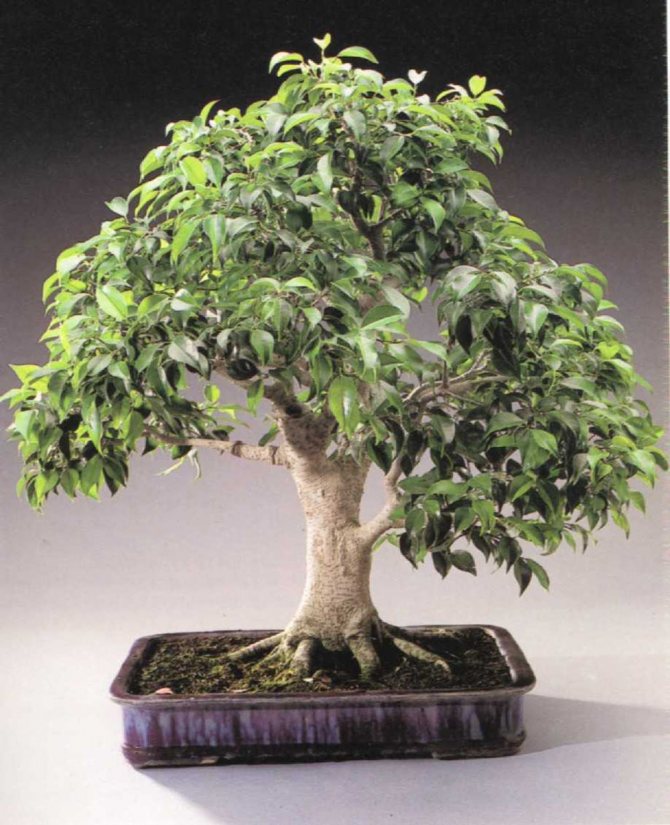

The tradition of growing bonsai garden and park trees came to us from time immemorial. The art of mini-plants has been honed over the years to perfection. Today, a novelty has appeared in this direction - the cultivation of bonsai among indoor trees. When considering options, flower growers agree that Benjamin ficus bonsai is the most successful solution from the existing ones. The Benjamin variety has all the necessary characteristics to create a bonsai with your own hands:
- Small leaves, which will largely create the effect of "dwarfism";
- Beautiful bark of ficuses, this creates additional beauty of the plant;
- Branched roots;
- Rapid growth of the plant - you can grow a bonsai with your own hands in 2 years.
Before making a bonsai, you should carefully consider the shape of the future plant.
Crown
You can grow a bonsai of the desired shape with your own hands by regularly cutting off excess branches and pinching the upper bud. Ficus belongs to fast-growing plants and the recovery time will take very little. The general scheme is as follows: for every 8 sheets that grow, we cut off 4, etc. After trimming, the cut points will begin to secrete milk juice, which is called latex. It is necessary to start circumcision from the bottom, gradually moving upward, step by step, to the very crown. During the procedure, it is necessary to use a special sharp instrument (garden scissors, sicator, razor, knife), after carrying out all the manipulations, lubricate the cuts with crushed charcoal.
"Florists, conducting a master class, recommend using miniature tools and never cut the foliage, only branches and roots."
After shearing the leaves of the ficus, they begin to turn yellow, curl take on rigid shapes, the general appearance deteriorates greatly. The main pruning should be done in early spring, when the plant is in the stage of rapid growth, if necessary, in summer or early fall. It is strictly forbidden to carry out any manipulations in the summer, at this time the ficuses are "dormant", and all life processes slow down.
Signs and superstitions
In Southeast Asia, the ficus Microcarpa is considered the home of spirits.
According to legend, mythical creatures - pontianaki - live in its crown. This is a female vampire perfume. These include only women who died during pregnancy. They wait in the night for lonely men, take the form of beauties, seduce them, and later drink the blood of unfortunate travelers.
In China, large specimens of plants are associated with a good mood and the vital energy "Qi". In Singapore, some trees are places of worship for Buddhists and Taoists.
Ficus Benjamin
Of all the varieties, Benjamin's ficus is most often found, represented by various varieties with different sizes and color of leaves. In nature, it can reach a height of more than 20 m, while indoor species grow no more than 1.5 m, depending on the variety and conditions of detention. Ficus Benjamin is great for mastering the art of bonsai, as it has a number of necessary properties:
- has dense foliage on short cuttings;
- elastic, well-branched branches;
- small size makes it convenient for indoor growing;
- unpretentious, easily tolerates frequent transplanting and pruning;
- beautiful decorative appearance: it has gorgeous foliage and dark brown bark;
- slow growth.
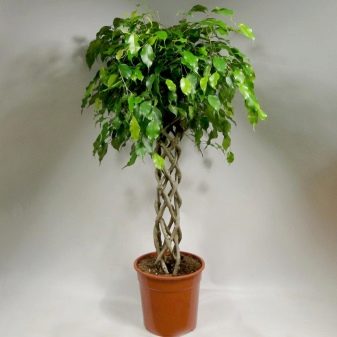

A strong root system of ficus grows not only in depth, but also along the surface of the earth. If no earth is added to the pot with the growing ficus, the roots appear above its surface. This natural property can be beautifully used when wanting to form a bonsai from Benjamin Ficus.
Seed propagation for ficuses is practically not used. The easiest way to propagate ficus is to put a broken-off lignified stalk in the water. Rooting occurs very quickly even from a single bud or side shoots. You should not try to get a viable plant from young, immature twigs: most likely, they will simply die in the water. When cutting, milky juice is released, it is enough to rinse it with running water or wipe it with a napkin. If the branches are thick or it is simply a pity for the plant flowing out with juice, you can close the wound with garden varnish, which is purchased in flower shops.
Bonsai from other types of ficuses: Bengal, Fig, Panda, Rubber, etc.
You can create an original and spectacular bonsai from other types of ficus, but you need to take into account some of the nuances:
- Bengal ficus. It is also called a banyan tree because of its specific shape: one plant looks like a whole grove. This is why Bengal ficus is valuable among bonsai lovers. You can also form a grove from other species, but it is easier to get bonsai from Bengal ficus, and it will look more spectacular. Leaves with a variegated pattern will add decorative composition to the composition.
- Ficus Panda has very dense leaf plates, which give the bonsai a special originality. The tree tolerates dry air very calmly, so it will take root well in a city apartment.
- Fig ficus, or Karika (wine berry, fig tree). This species has thick branches, so pruning is difficult for the plant to do. The leaves are large, but decrease in size over time - this is a plus for bonsai. The downside is that the fig ficus falls off the foliage for the winter. But in the summer, he quickly gains new strength, especially if you take him out into the open air.
- Ficus is rubbery. Not all representatives of this species are suitable for creating bonsai. Experts prefer to use specially bred hybrids with different colored patterns on the leaves. The leaves of rubbery ficus grow quickly and are arranged in a spiral, which is good for the formation of a bonsai tree. The plant is demanding on lighting, does not tolerate its change, so you should keep a bonsai from a rubber-bearing ficus in the same place. Do not forget that this type of juice is poisonous: cut with gloves and sprinkle the cut with activated charcoal.
- Rusty red ficus is distinguished by a smooth reddish bark and leaves covered with a red bristle on the inside. This species grows very slowly, but you do not have to prune often. The stems of the Rusty-red ficus, like the Bengal ficus, form a banyan tree, but not very pronounced. The plant is very hardy, mistakes in care are not critical.
Bonsai Form
In order for the ficus bonsai to turn out beautiful, it is important to choose the right shape and carry out the formation of the crown. The most common forms for the Ginseng, Panda and Benjamin varieties are classic and upright. Pruning is done differently for different varieties. So for your first bonsai, it is worth choosing the classic form, because, thanks to it, it will be more convenient to do everything. This shape is characterized by a special straight trunk without branches at the bottom, and the roots are very thick and branched.
Varieties of bonsai forms
- Moyogi. Most types of bonsai, such as moyogi, have a rather curved trunk. The position of the tree is vertical.
- Shakan. Another form of bonsai is the oblique view, or, as it is also called, shakan.This type of form has inverted roots, and the ficus itself is located at an angle.
- Sokan. An interesting bonsai can be made from the bifurcated sokan shape. This form is characterized by the fact that several trunks grow from one root, one of which is smaller and the other is higher. That is why such a bonsai looks very unusual and beautiful.
- Hokidachi. For professionals in cultivation, broom-shaped or hokidachi forms, which are difficult to perform, will serve.
- Grove. A variant of the grove shape is performed immediately from 5 or more ficuses, which differ from each other.
To grow ficus bonsai properly, you need to learn how to form roots. It is also important to watch the formation of the crown and trunk as a whole.
How to do it: basic rules for growing bonsai
So, you have already picked up the ficus of the desired type and even decided which of the forms you want to give it. But before you start creating bonsai, you need to familiarize yourself with the rules for caring for them.
Choosing a container for planting a plant
Looking at the ready-made bonsai trees, you probably paid attention to the containers in which they were grown. When choosing a pot for a bonsai, it is very important to observe the harmony of the shape of the plant and the size of the container. A basic rule of thumb when creating a traditional bonsai: in most cases, the dishes should be shallow, almost flat, but wide enough. So you can avoid overgrowth of the root system, which entails an increase in crown and deciduous mass.
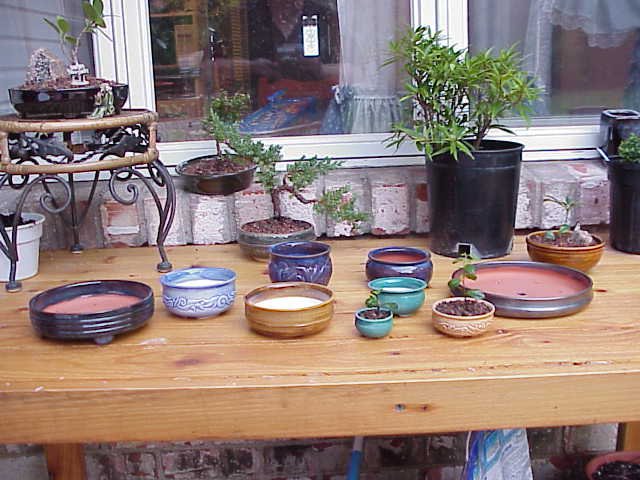

For planting bonsai, choose shallow, almost flat pots.
Soil for planting and growing bonsai
Based on the size and shape of containers for this type of plants, the soil requirement for them is also formed. You can provide the ficus with the most comfortable existence, close to natural conditions, by planting it in natural soil. Purchase ready-made soil for ficuses and palms from the store or prepare it yourself. To do this, you need only 3 building blocks:
- sand;
- clay;
- humus.
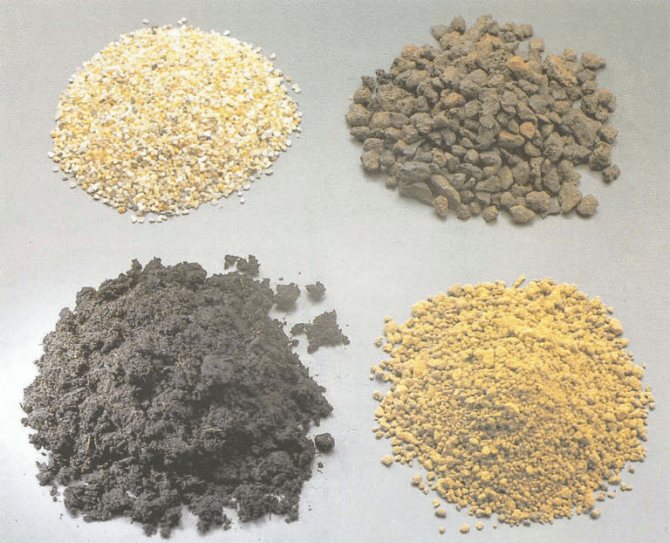

Sand, clay and humus are essential constituents of bonsai substrate
The sand should be of two types - coarse (grains of sand 3–4 mm in size) and fine (grains of sand 1–2 mm in size):
- The coarse sand will provide drainage through which excess water will drain into the sump during irrigation. The layer of coarse sand at the bottom of the container should be about 2 cm. Do not take sand with a coarser fraction: it will quickly become clogged with small particles of clay, and the water flow will become difficult. Smaller sand will simply spill through the mesh on the drainage holes of the container (its mesh size is no more than 3 mm).
- Fine sand is part of the substrate, sometimes together with coarse sand. When preparing the soil mixture, keep in mind that the proportion of sand in it should be at least 20%, maximum 60%. The more fine sand in the soil, the lighter it is, which means that the roots in it will not rot. There is also a minus: a plant in such soil can dry out, since it does not retain water for a long time.
Good, high-quality sand of any fraction can be obtained in several ways. For example, get it from the bottom of the river. If this is not possible, then take red bricks and crush them, then sift well. Often, instead of sand, small expanded clay (about 3 mm in diameter) is used.
Now about the clay. Its main function in the composition of the soil mixture is to retain moisture for the root system and release it at the right time. In Japan, special types of clays are traditionally used, and bonsai growers from other countries have adopted this practice. The most suitable is clay "Akadama" - a granular substrate, the particle size of which is 4-6 mm. They absorb a large amount of moisture, while not soaking or sticking together, letting air through perfectly.
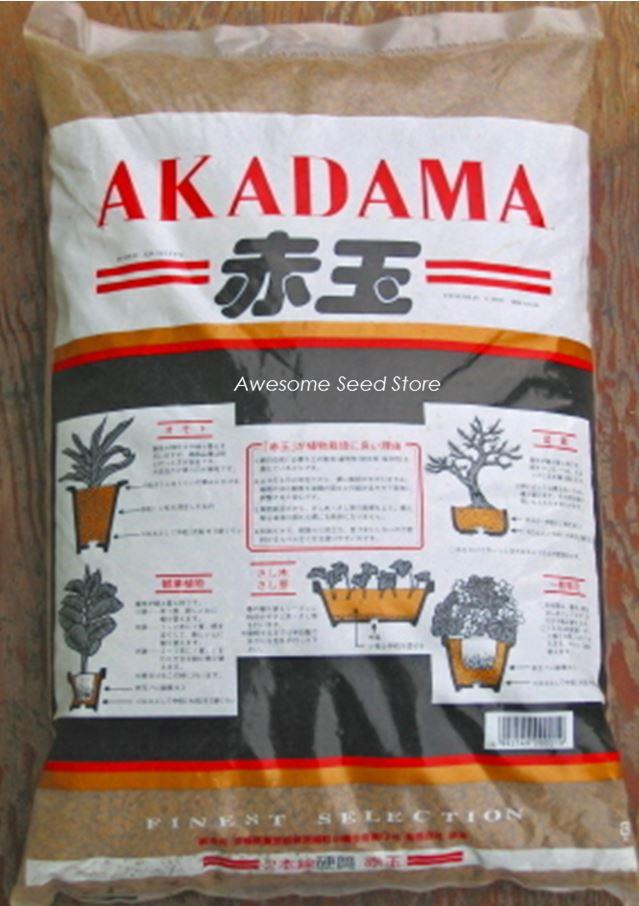

Japanese clay "Akadama" is recommended as a soil base for bonsai
Humus, leafy soil, peat - these constituents of the soil will provide your future bonsai with nutrients.
Roots
To give the bonsai the desired appearance, the ficus is planted in a spacious container or pot filled with plenty of drainage. And to create a widely branched root system, you need to regularly pinch the top of the plant. With regular pinching of the upper kidney, the ficus grows in breadth, and the roots grow at the same time. To create the effect of the roots coming out (see the photo below), it is necessary to trim the root system every six months and transplant it into a wider pot. When transplanting a pot, you need to raise the roots a little higher so that they end up above the drainage surface.
